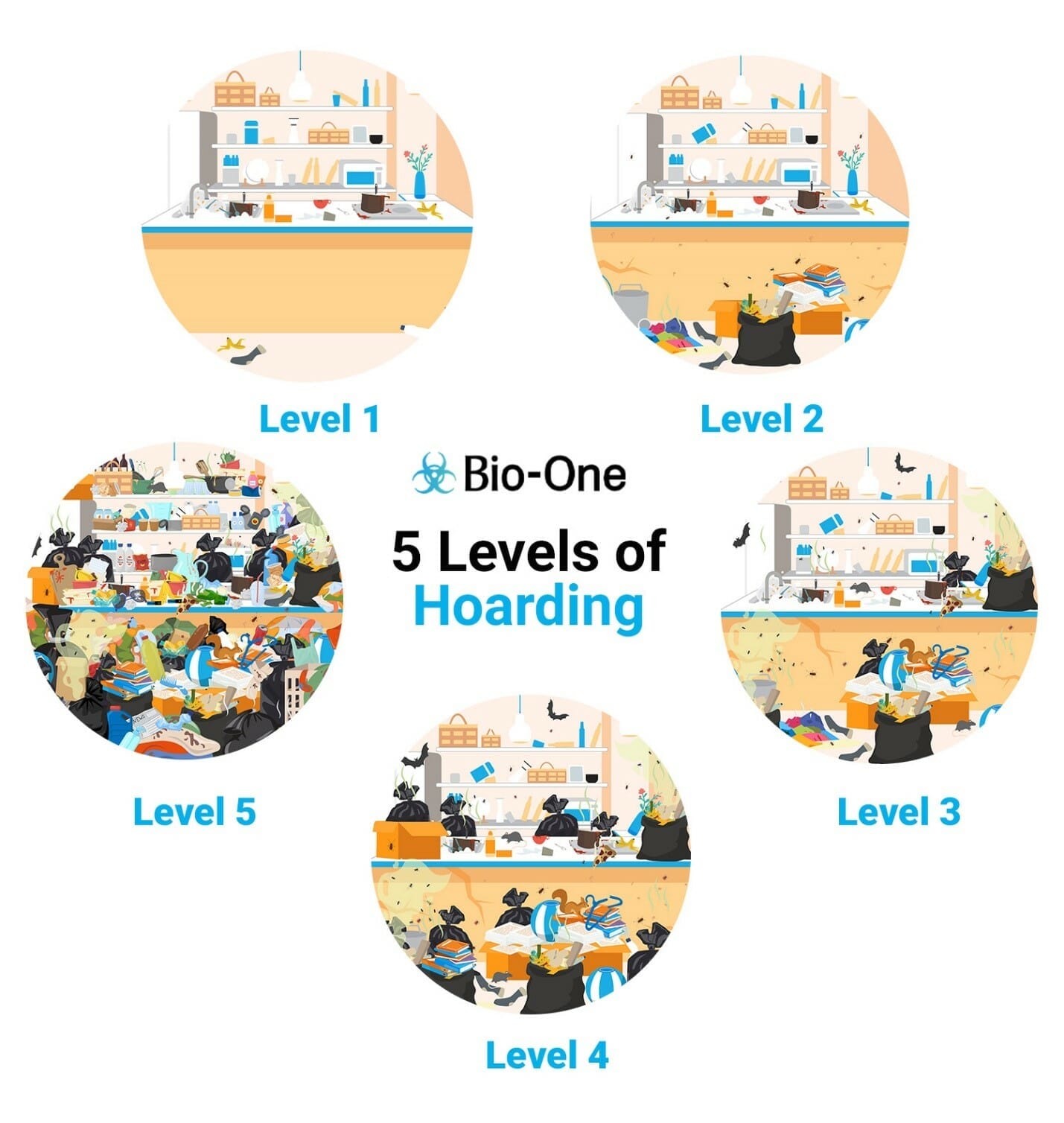
The word “hoarding” probably evokes a particular image, made more common by shows like Hoarders that highlight extreme examples. In reality, not all hoarders have rooms full of items piled high to the ceiling.
The Institute for Challenging Disorganization (now, there’s a relatable title!) has classified hoarding behavior into five levels on their Clutter-Hoarding Scale.Level 1 Hoarding
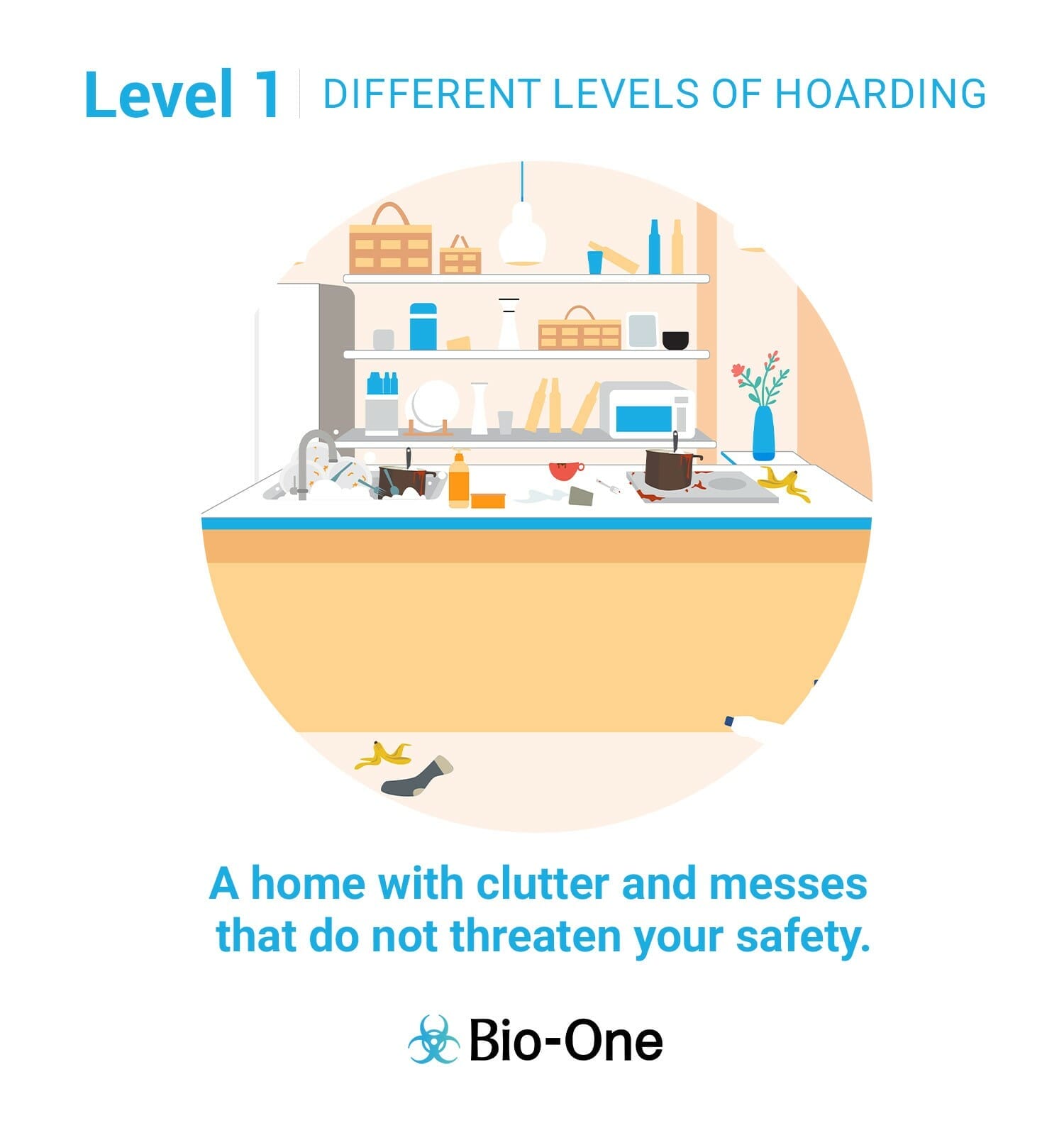
At Level 1, a home is not pristine, but the space is still easily accessible and sanitary. There is clutter, but no concern for safety. Most, if not all of us, have been in Level 1. Many people spend most of their time in this stage.
Here are the defining characteristics of this level:

At Level 2, the home is still very livable, but there’s more evidence of disarray. The home is in need of cleaning and may be starting to overwhelm the residents. The hygiene level isn’t optimal.
Most of us bounce between Level 1 and Level 2. However, here are the more defining characteristics of Level 2:
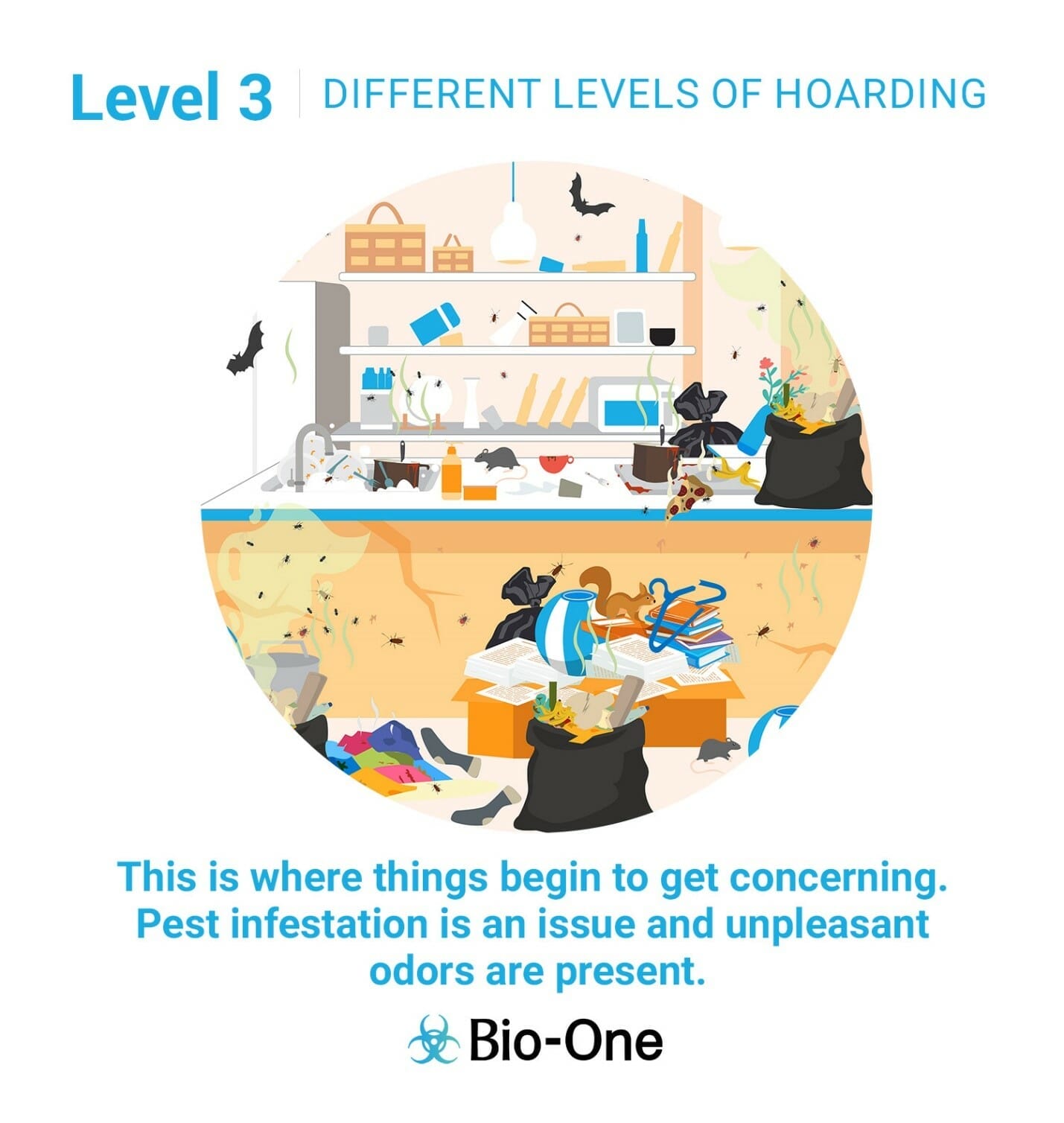
Level 3 is considered the turning point between manageable household disorganization and a more serious issue. Level 3 homes show extreme disorganization and indicate hoarding behavior.
Here are the defining characteristics of this level:
Level 3 households should consider hiring outside help. Although, it’s still possible to get it under control with a concerted effort from the whole family

At Level 4, the home shows excessive clutter.Those living in Level 4 conditions need professional help. At this level, part of getting help includes professional cleaning to transform the house into a safe, hygienic space where people can thrive. Mental health counselors and social workers may also step in to help residents change their habits.
Here are the defining characteristics of this level:
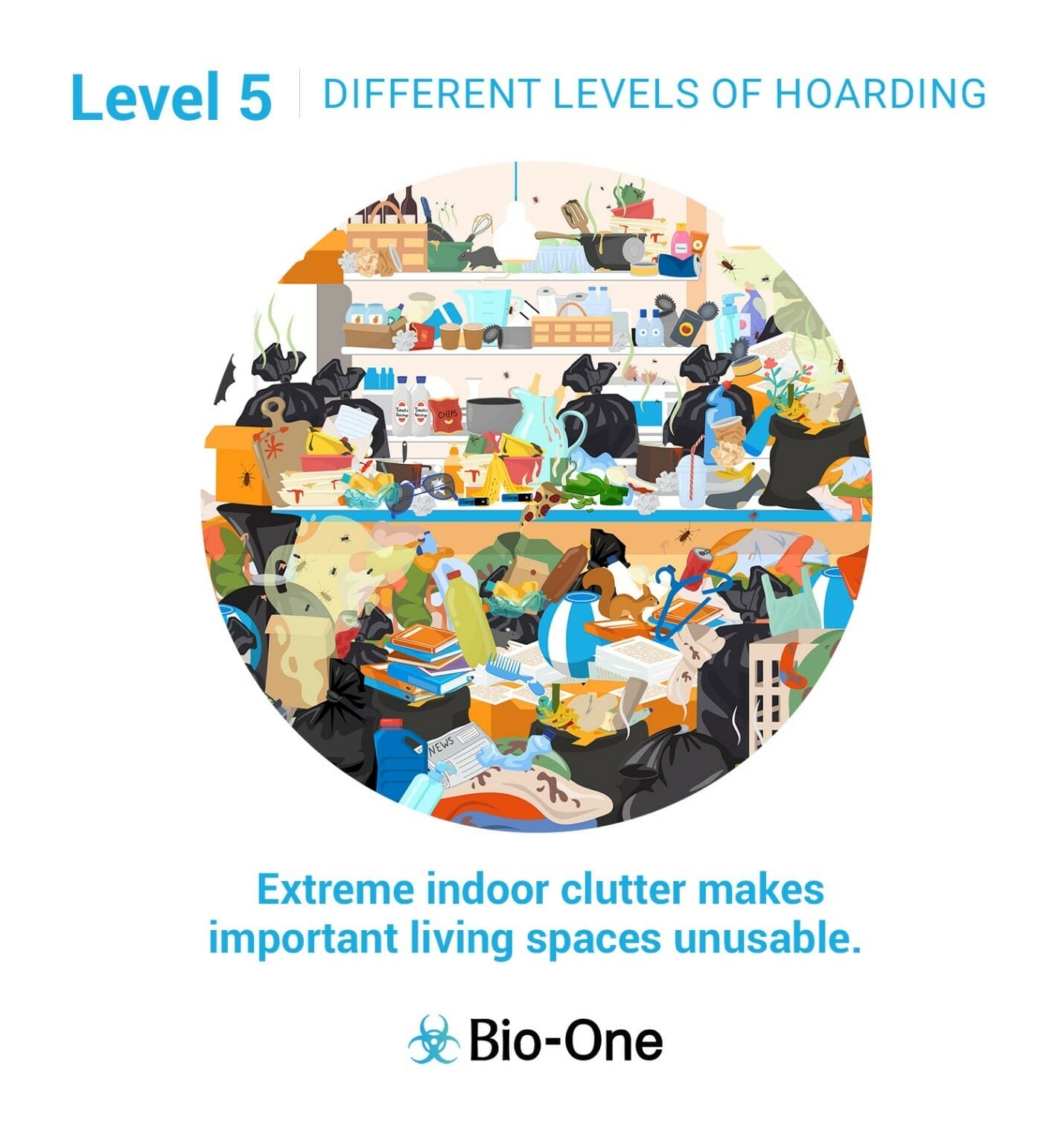
Level 5 is the highest level of hoarding behavior. Level 5 homes are alarmingly hazardous.
They require professionals with safety equipment and training to clean.
Here are the defining characteristics of this level:
If you or someone you know is struggling with these levels of hoarding we are here to help.
You can find more information at https://bioonehenderson.com/ or contact us at (702) 704-3724

Suicide is a difficult topic most people prefer to avoid altogether. Our societal aversion to the topic means most people don’t know what they need to do if the unthinkable happens.
Unfortunately, in spite of the best efforts of many, suicide happens. This leaves surviving loved ones to navigate a confusing and difficult healing and cleanup process.
Many resources offering help following suicide launch right into how to cope with grief. But if you are still in the phase of trying to manage the logistics, you may be looking for different information.
As a biohazard cleanup company, our work at Bio-One often involves families coping with the loss of a loved one to suicide. Because of this, we strive to do our part to help by providing some helpful information for navigating this difficult time.
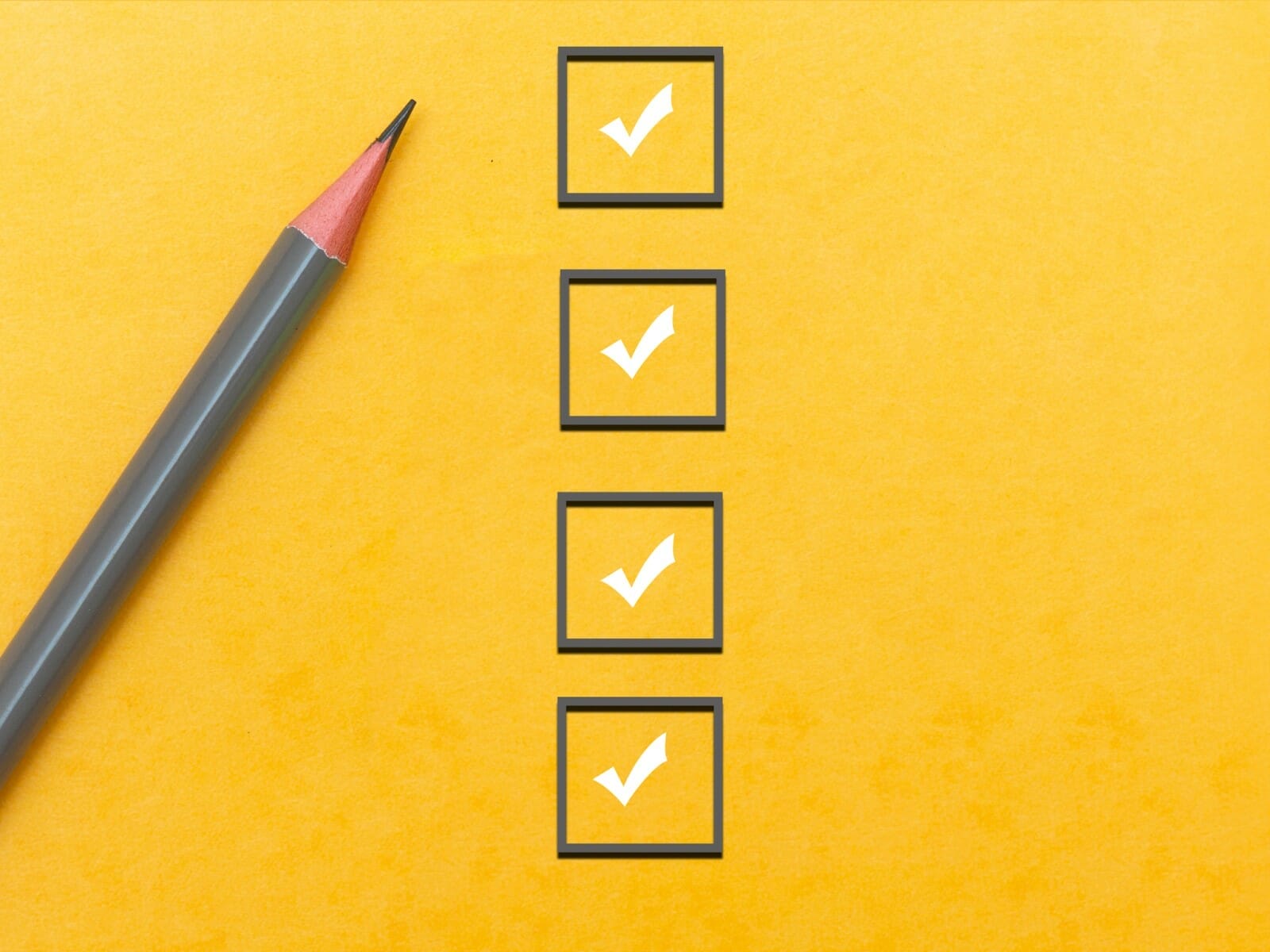
If you are here because you need information, it’s likely you’ve already contacted emergency services about the death. After the police, coroner, and/or medical examiner have released the scene and your loved one’s body has been transported to a medical facility there are a few things that need to happen next:
Suicide cleanup is a job that should be entrusted to professionals. If you are currently in the position of needing to arrange for cleanup, please contact Bio-One right away at 303-625-6543.
We have all the equipment and expertise needed for the job, and we will treat the scene, the situation, and any belongings with respect and care. We will also help you to get the insurance process underway to get cleaning costs covered by your homeowner’s insurance. Through this difficult and traumatic time, this is the last thing you should have on your plate. We are here to help.
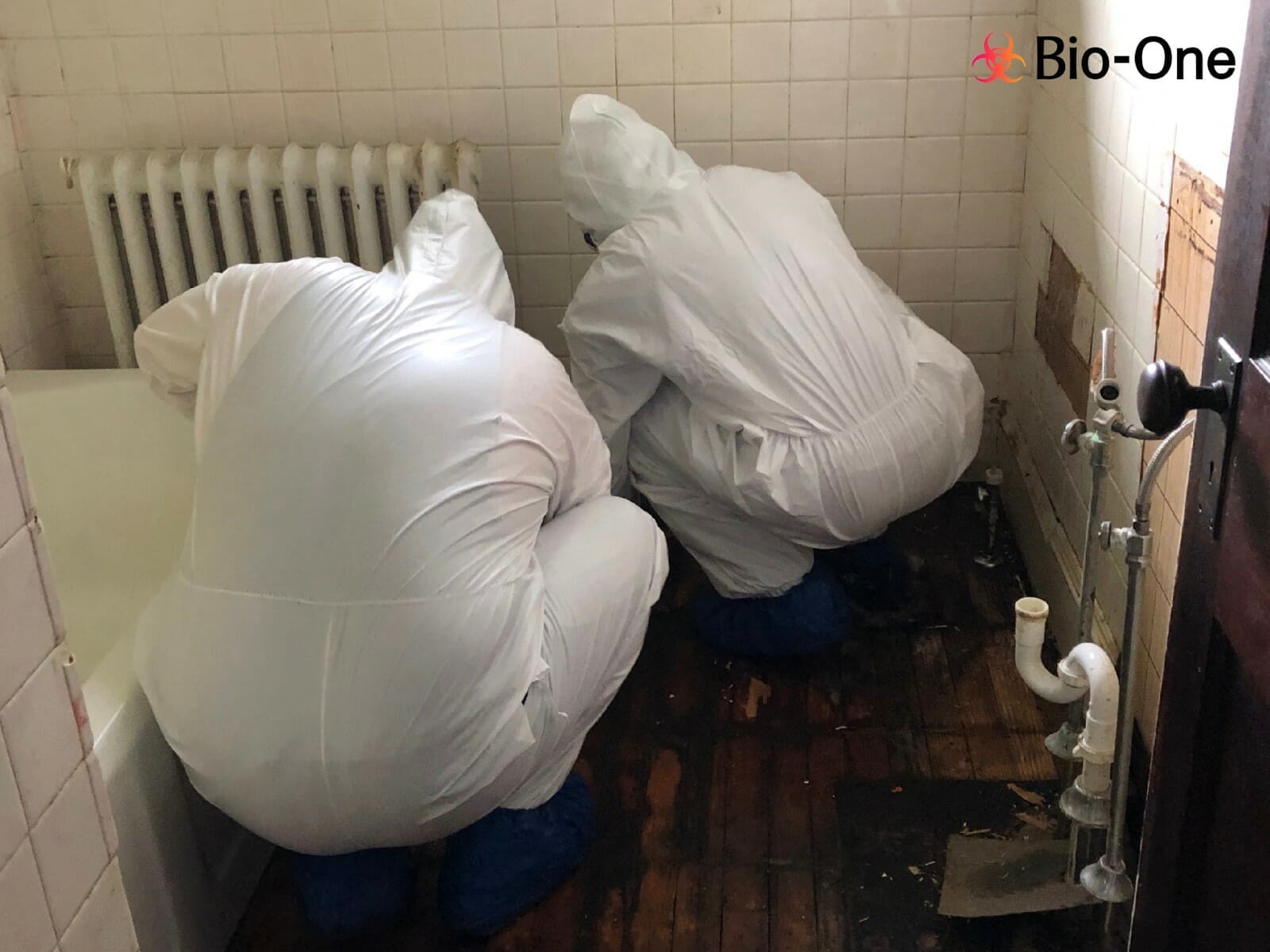
Even though you are not participating in the cleaning itself, understanding what’s involved can be an important part of the grieving process. Some people may need to know exactly what is involved in cleaning up the scene.
The time required for a clean-up and the extent of what’s required can vary depending on how much bio-matter is left at the scene and how long the body was there. Bio-One has a tried-and-true process to restore the scene to a safe and habitable state in a way that is both thorough and respectful.
Our process is as follows:
We hope these details will help to take some weight off your mind during this difficult time so you can focus on any preparations you need to make.
With cleaning out of the way, your remaining responsibilities may focus on informing family and friends and/or making funeral arrangements. Be sure to take care of your own mental health as you take the next steps. You are going through something very painful, but hopefully the help from your family, friends, loved ones, and community will ease some of the stress.

Bio-One is here for you as you weather this tragic time. We hope our service will help ease your burden. Though the circumstances may be difficult, we are honored to be a part of your community at this incredibly challenging time.

One of the most difficult parts about realizing you may be suicidal is feeling like you can’t talk to anyone about it.
Whether out of shame, or fear of how a loved one will react to finding out, reaching out to someone you know for help can be incredibly paralyzing. This sense of isolation can be dangerous, especially in moments of crisis.
In these discouraging and frightening moments, the 988 Suicide & Crisis Lifeline is there.
The 988 Suicide & Crisis Lifeline is a free resource anyone experiencing a crisis can contact for help.

The Lifeline connects people with skilled crisis counselors who listen and provide immediate support to guide you through the worst of your distress. They can also refer you to resources to help you keep yourself safe in the long term.
The Lifeline is funded by the Substance Abuse and Mental Health Services Administration (SAMHSA) as part of its ongoing mission to reduce suicide rates nationwide.
They work with many local and government suicide prevention organizations to extend their reach everywhere in the United States.
Contacting the Lifeline is as simple as calling or texting 988.
The 988 Lifeline is for anyone who is thinking about suicide, concerned for a friend or loved one, or just in need of emotional support. This means you can call, text, or chat even if you are struggling but not yet in crisis.

People call the Lifeline for any number of reasons:
These are just a few concerns that may prompt someone to call, but they should illustrate that you don’t need to wait until you’re in severe distress to call.
988 is a crisis service, but not an emergency service. This means if you are in emotional distress but aren’t yet in danger, it is the right time to call. 988 counselors are well-trained in methods to help you steer out of an emotional spiral and ground yourself.
If you or the person you are helping is in immediate danger of harming themselves, call 911 right away.
There are a few different ways you can contact the 988 Lifeline depending on your needs. You can call or send a text to 988, or you can chat with a counselor online at 988lifeline.org. Help is available in English or Spanish, and there are additional options for ASL speakers.

Depending on how you choose to contact the Lifeline, here is what you can expect from the process:
If you call…
You will be greeted by an automated message and a phone tree. If you are a veteran, you can press 1 to be directed to the Veteran Crisis Line. For help in Spanish, you can press 2. Otherwise, you can remain on the line and you will be placed on a brief hold while you are connected to a counselor.
If you text…
After you send a text to 988 requesting help, you will receive a short survey to let the counselor know a little about your situation. After you respond, the text line will connect you to your counselor who will instruct you further.
If you chat…
Similar to the text line, you will receive a short survey asking about your situation so your counselor knows how to help. There will be a short wait time while you are connected, and then your counselor will instruct you further.
Regardless of how you reach out, once you are connected to a counselor, they will listen to your problems and ask you questions to figure out the best way to help you. If needed, they may offer you steps to help you interrupt a panic attack or work your way out of a thought spiral.

Counselors may also walk you through some steps to keep yourself safe until the crisis has passed. Once they have seen to your immediate needs, they may direct you to resources online or in your community to help you find ongoing care for your mental health concerns.
The 988 Lifeline is always free and always confidential, so you never need to worry about reaching out.
Suicide is on the rise and is one of the leading causes of death in our country, but it can be prevented. The 988 Lifeline is making huge strides in prevention efforts by providing people a place to turn when they feel hopeless.

Studies have shown that almost 98% of people who contact the 988 Lifeline are able to work through their crisis without needing emergency services. Having somebody to talk to can make all the difference.
—
Whether it’s yourself or a loved one, a suicidal crisis can be a scary thing to navigate. That’s why we at Bio-One hope this guide will help you know how to intervene to keep yourself or the people you love safe.
Part of our mission is to provide community resources. That’s why we dedicate so much of our time to projects like this. We want to create a future where we never have to answer another suicide call again.
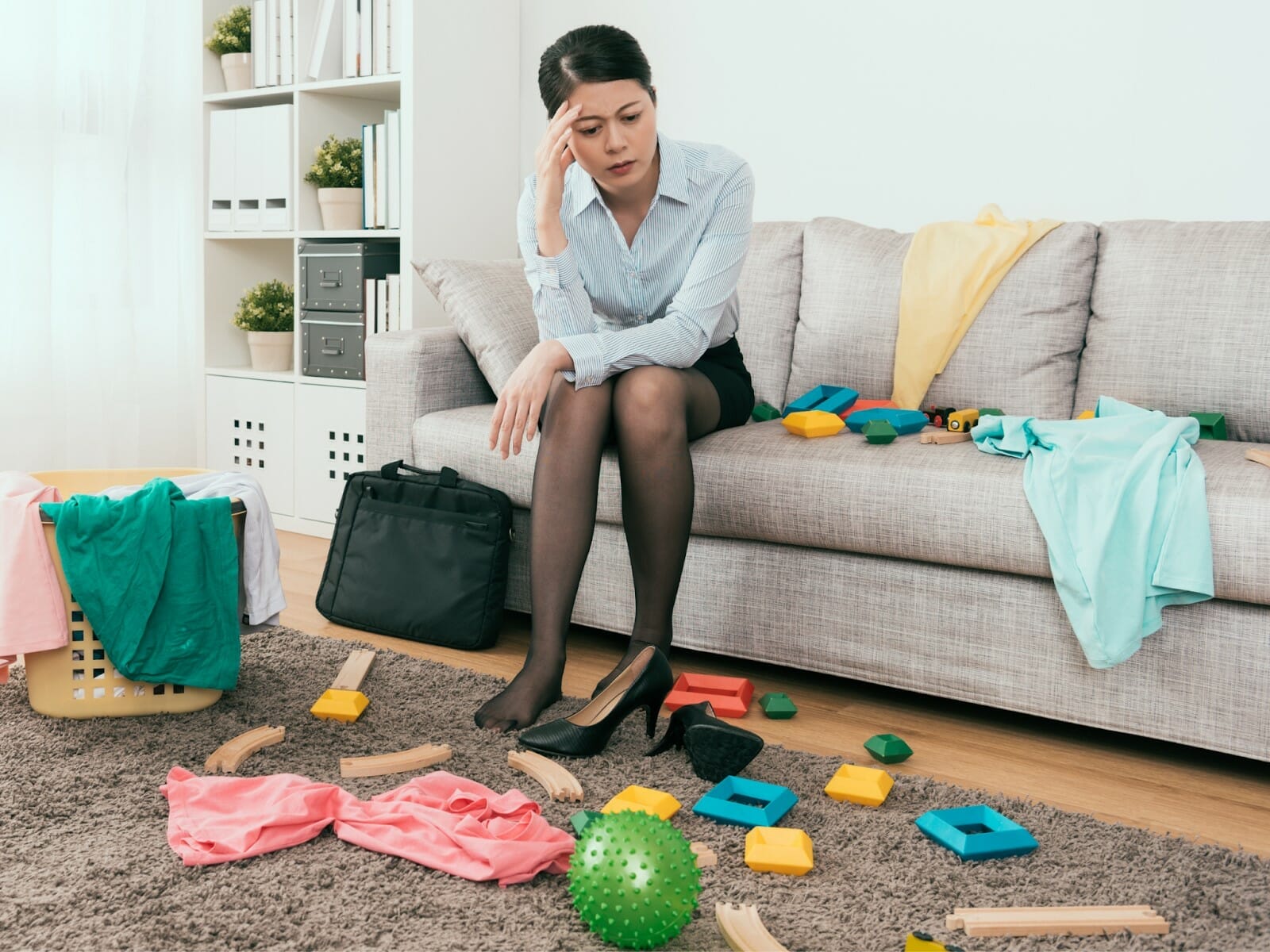
What is stopping you from getting the clutter in your home under control? It might be that you’re overwhelmed—and that’s okay. Maintaining and cleaning a home is a huge task. When you’re trying to do it by yourself amid many other responsibilities, you might not be able to do it all.
Fortunately, you don’t have to do it yourself. There are many support systems out there to help you manage your home. If you’re feeling overwhelmed, you can reach out for help.

Family members are often the first ones to step in when you need extra hands. If you live with a partner, children, or other family members, they should already be taking on a share of the housework as appropriate to their age and health status.
Friends and other family members are also often willing to lend a hand to help with a limited-scope cleaning project, such as:
If you find yourself facing any of these, you could ask a loved one for help.
Sometimes, you might need more help with your house than your friends and/or family are able to give—and it’s important to realize that’s completely okay! There are many different types of people who can help you get your house under control when it gets overwhelming.

If your schedule makes it difficult to stay on top of cleaning tasks, hiring a house cleaner can take some of the burden off your shoulders. You can hire them to come on a set schedule, like weekly or monthly, or schedule a cleaning every now and then when you need extra help—or even just bring them in for a deep clean spring cleaning to get your home back on track.
An excellent way to start when you’re looking to hire someone to come help is by asking around to friends and neighbors. Who do they use and recommend? Another good source is neighborhood mailers like Valpak that include coupons for local services.
However, no matter who you hire, it’s important to understand that house cleaners typically do not pick-up, declutter, or organize homes. Rather they clean:
Whether you hire someone to clean the entire house or ask them to focus on key areas, like the bathrooms or kitchen, you may need to pick up clutter before they come over. This makes it easy for them to access the surfaces that need to be cleaned.

If the idea of picking up all the clutter for a house cleaner to come over is overwhelming, an organizer may be the helper you need.
Professional organizers consult with you about how best to manage and store your belongings. They may physically come into your home or meet with you virtually to help you come up with a clutter strategy.
Organizers will help you troubleshoot the reasons for your clutter, find strategies to deal with it, and give you accountability to take care of it.
Depending on the organizer and whether they meet with you in person or virtually, they may help you move items, but they aren’t cleaners. Their primary goal is to help you find your own sustainable strategy for a decluttered space.
Similar to hiring a house cleaner, you should start your hunt for a professional organizer by asking around to friends and neighbors. Community mailers and social media groups are also good places to check, and finally, a good, old-fashioned Google search can help you find reputable professionals in your area.
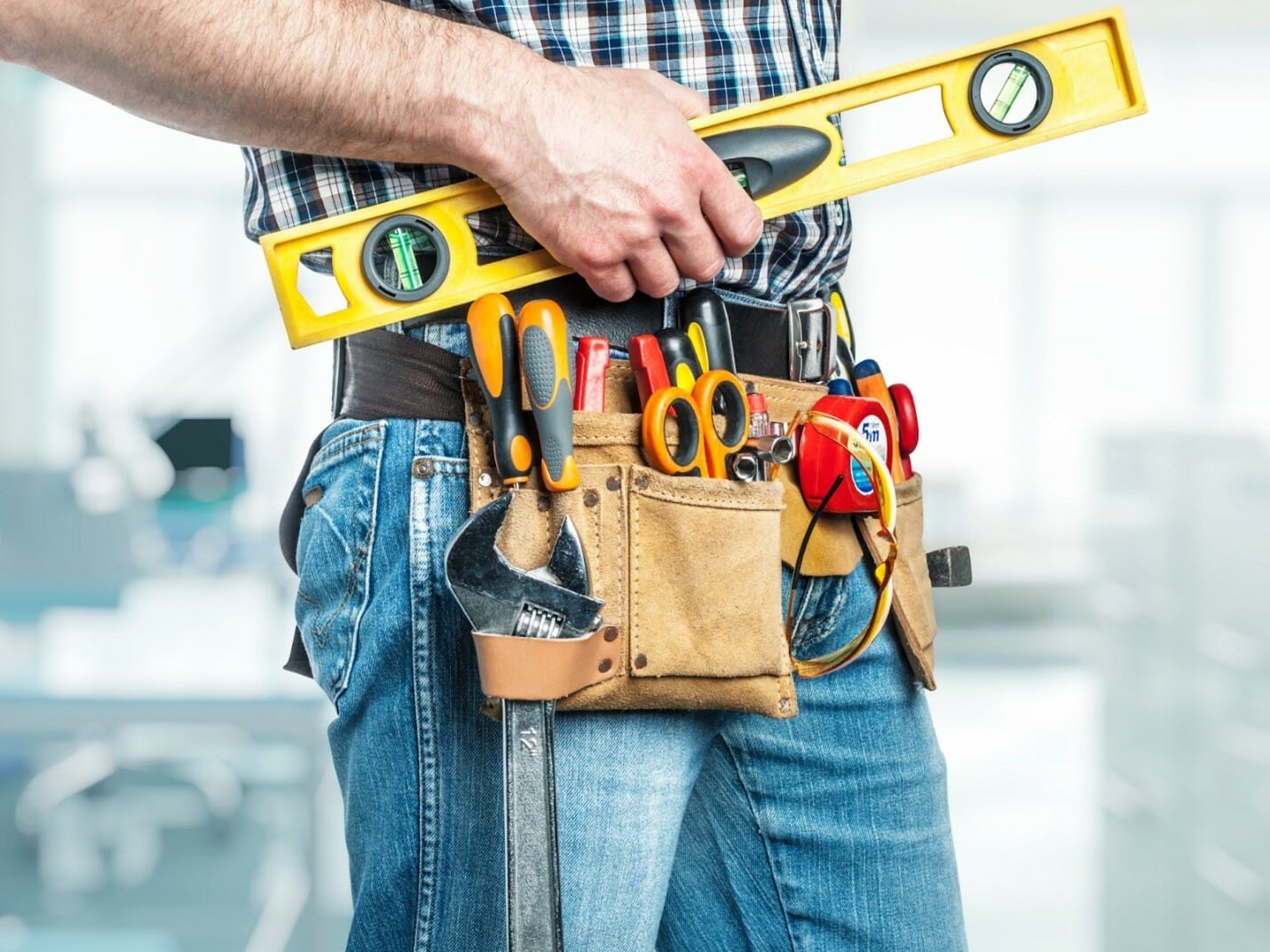
Sometimes, broken appliances or structures in the home can cause a barrier to cleaning. It can feel like you can’t get things done because there is an issue you can’t fix on your own.
A handyman can take care of minor repairs in your home.
They can also install shelves—a great asset when you’re trying to be more organized!
Check out websites like Angi (formerly Angie’s List) or Thumbtack for reviews of handyman services ranging across all sorts of specialties. Community social media groups, mailers, and friends and neighbors are all also good places to turn for recommendations.
Often, our cleaning struggles stem from a deeper source.
Many of us are not just messy—we may be unmotivated due to depression or anxiety, struggling to focus on cleaning due to ADHD, or dealing with any number of other hurdles. In these cases, hiring a cleaning service is putting a bandaid over the problem.

To see lasting change, it can be helpful to enlist a mental health specialist to help you find your equilibrium. There are a wide variety of resources available. For a complete list, check out this article from the National Institute of Mental Health.
Even if you don’t have a formal mental health diagnosis, talking with someone about ways to cope with the stresses of daily life can make a difference in your motivation and ability to troubleshoot problems.
You can find mental health support from a variety of practitioners, including:
Sometimes, your home needs a coordinated team to tackle all the different areas in need of cleanup and repair.
If your home has so much clutter that:
You’ll want to enlist help that can safely and efficiently take on the challenge.
When you work with a specialized cleaning team like Bio-One, you’ll start out by meeting one of our team members to discuss your goals and situation.

They’ll investigate any safety hazards and ask you questions about what you want them to preserve in the home, what should be disinfected, and other goals unique to you.
When the team begins work in your home, they will do all in their power to keep their work discreet, including changing into protective gear in your backyard or garage if desired and using unmarked vehicles.
You will be looped in throughout the process of Bio-One’s decluttering and deep-cleaning work.
Imagine the relief you’ll feel knowing your home is in good hands.
If Bio-One’s cleanup services sound like what your home needs, give us a call anytime at (702) 704-3724. Our lines are open 24 hours a day, 7 days a week, 365 days a year. You can also fill out a service request on our website.
There’s no shame in needing help with your home. At Bio-One we’re here to guide and support you through the process.

By now, most of us have heard of Marie Kondo’s famous book and Netflix series, The Life-Changing Magic of Tidying Up. It’s definitely nice to be in a clean space, but is it life-changing? Or magic?
Believe it or not, clearing the clutter in your home really can make a big difference in many aspects of your life.
The most obvious reason to clear the clutter is for health and safety reasons.
Too much mess can harbor the growth of dangerous germs, especially in bathrooms and kitchens.
You need to be able to wipe down floors and surfaces. It’s also essential to throw away old food and make sure pipes are clear and functional. This prevents:
But what if you keep everything sanitary?
Are there reasons beyond health and safety to pick up?
Research tells us yes—clearing the clutter can benefit your health in a number of ways.

Decluttering can help you get a better night’s sleep—and not just because you no longer have piles of laundry on your bed.
People living in cluttered homes are more likely to experience insomnia. The exact link between clutter and trouble sleeping isn’t clear, but it is somewhat of a chicken-and-egg problem.
Clutter increases stress levels, which makes it harder to fall and stay asleep. Lack of sleep leads to difficulty concentrating and completing tasks, which can make it hard to clean.
Imagine how your quality of life improves when you’ve had a good night’s rest. Now, let that feeling motivate you—better sleep is on the way.

When your home is messy, it can be difficult to have friends over. You may resist inviting others out of embarrassment, or it may not be possible for practical reasons. Everyone needs a place to sit, after all!
When you create a fresh, welcoming space, you can enjoy the company of your loved ones in your own home. You can even host friends and family from out of town when they come to visit.
Decluttering can help you cultivate your connections and begin creating new ones.
Even if you’re not consciously aware of it, clutter in your home may be affecting your stress levels.

On a conscious level, seeing clutter can be a constant reminder of your to-do list. When you see a pile of items on your counter that need to be put away over and over again, your brain feels a little ping of guilt.
Over time, constantly feeling that need to clean up can create a heavy stress load. And in this day and age when so many are working from home, that added stress all day every day while trying to be productive at work can quickly build to overwhelm.
Clutter can also affect your stress levels subconsciously. Seeing clutter can overwhelm your working memory.
Your brain is constantly working on a subconscious level to determine what you need to pay attention to and what you need to ignore. When there are items everywhere, the brain works harder to process what should be noticed.
On the other hand, cleaning up clutter lets your brain relax. Being in a clean room may decrease your cortisol, or stress hormone, levels.
Just as your brain working hard to ignore clutter can lead to stress, it can also lead to distraction. Cleaning up your space can improve your ability to focus on tasks and get things done.
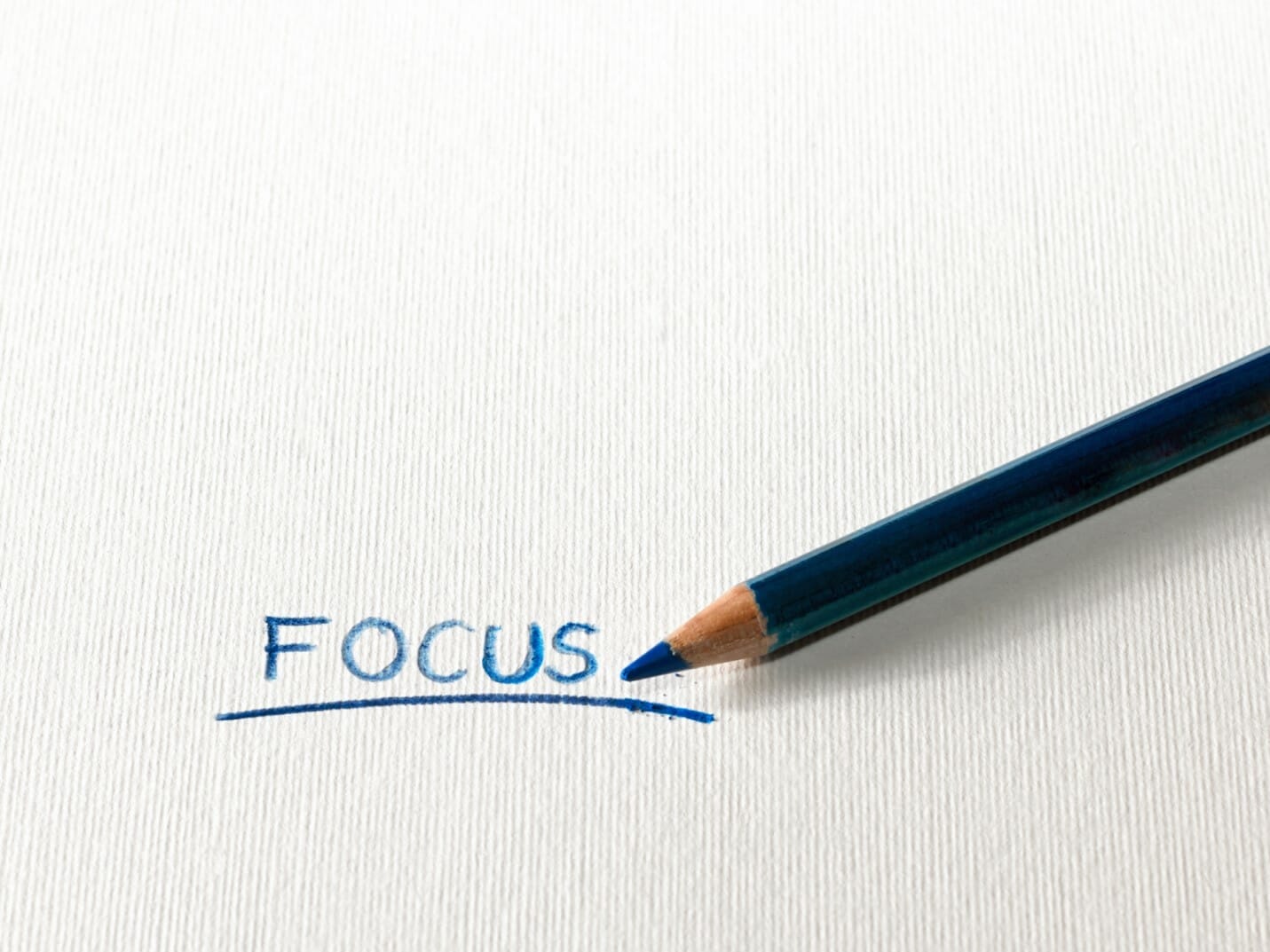
On a physiological level, your brain will simply have less stimulation. The more you see, the more work your brain has to do. When your area is clean, you can funnel that brainpower into whatever you’re working on.
Clutter affects your focus on a conscious level, too. If you’re noticing cleaning tasks that need to be done, it can be hard to hone in on the task you’re working on.
Even if you’re trying to focus on cleaning, multiple messy areas can make it difficult to choose just one. Every tidying task you complete gives your brain just a little more room to focus.
When you’re in a clean space, odds are you feel better. Studies link cleanliness to a better mood, feelings of accomplishment, and the ability to relax.

Even if life circumstances are bringing you down, having a well-ordered space can still help you respond more calmly to stress.
Emotional regulation is the ability to respond mindfully to your emotions instead of reacting thoughtlessly to triggers. In a clean space, your brain is less distracted, giving you the mental real estate to process your feelings and respond thoughtfully.
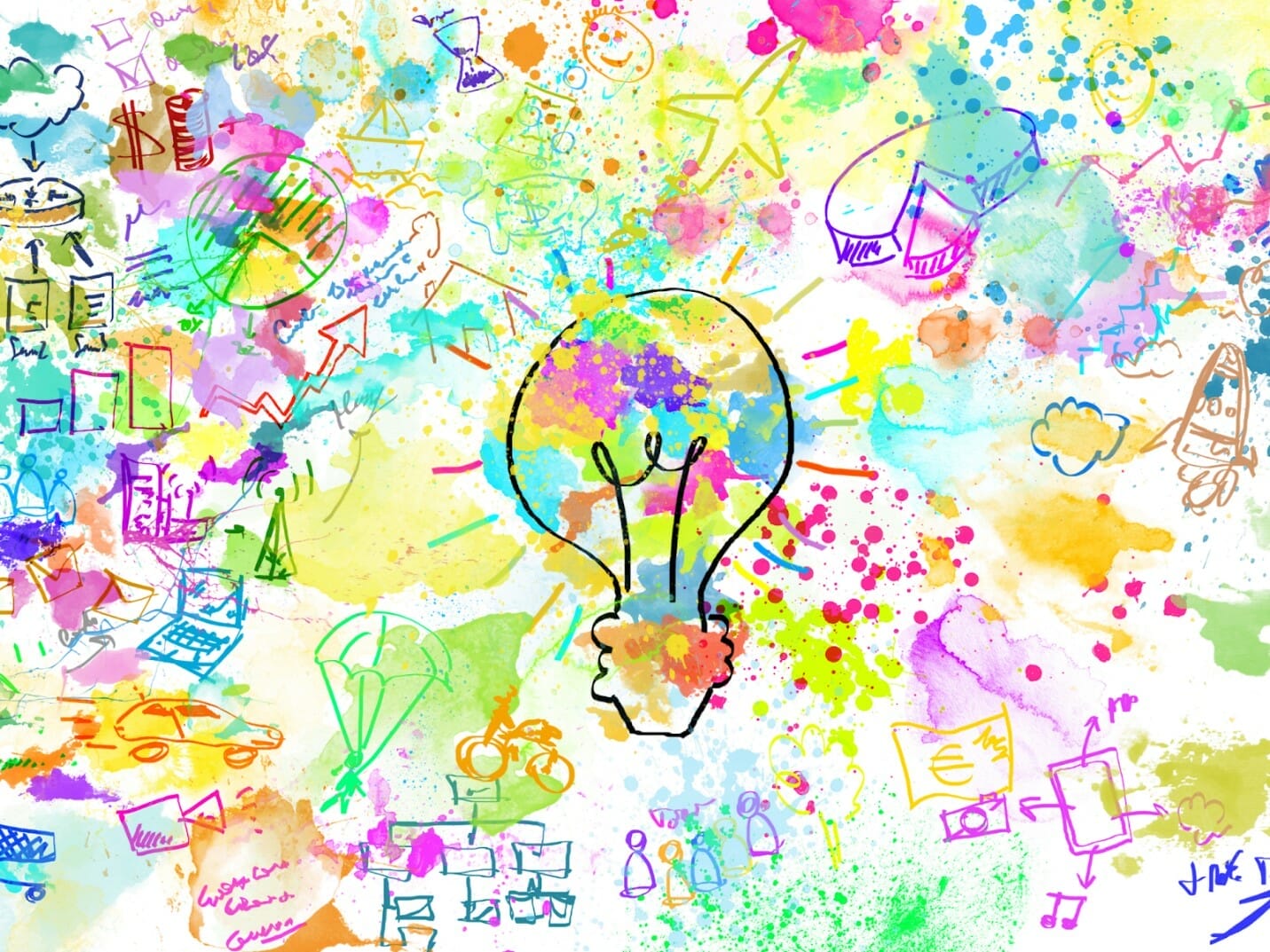
Once again, it all comes down to brain space—when you’re not distracted by visual clutter or feeling guilty about jobs left undone, your brain has more space for other things.
You can dedicate the time you spend worrying about clutter to solving problems and growing new ideas. If you create physical art, love home projects, or are a crafter, you’ll have space to work on your projects (and hopefully, motivation to clean them up when you’re done!).
Despite all the benefits of having a clutter-free home, it isn’t always easy to make it happen. If you’re overwhelmed, let Bio-One help you. We have a discreet, compassionate team of cleaning experts who are passionate about helping you.

Call us today for a consultation.

You have probably put serious consideration into your pets’ habitats.
Whether you have a furry animal like a dog or cat or something scaly like a lizard or snake, you’ve likely researched their needs. No matter your furbaby of choice, you’re likely making an effort to provide the best possible home for them.
However, you might not be aware of how clutter affects pets. It's important to make sure your home is a safe environment.
Here are 5 reasons why controlling clutter is critical to giving your pets the best home possible.

When high levels of clutter are present, it can be tricky for your pets to navigate your space. They might not be able to run and move freely if there are many items on the floor. Many pets also experience anxiety, which can be exacerbated by cluttered surroundings.
Even if pets are not injured or harmed by the clutter, they may still be limited in their ability to thrive. High levels of clutter may restrict their activity to the point where they’re not getting the exercise they need to be as healthy and happy as possible.

When homes have excessive clutter, there is a higher risk of injury to your pets. They may:
It’s important to put all dangerous objects out of reach and have clear, navigable pathways for your pets’ safety.
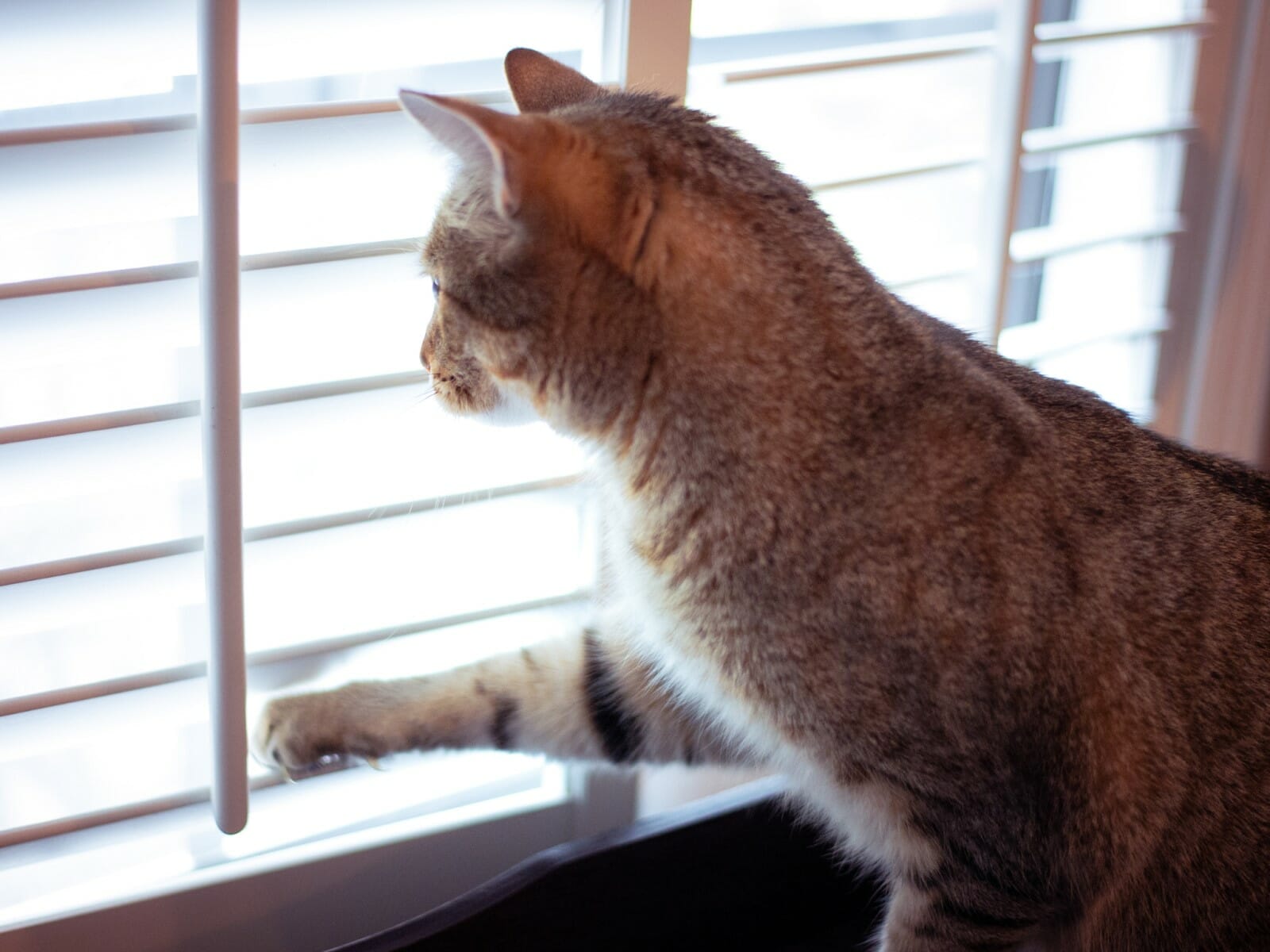
A clean space makes it easier to make sure your pets don’t escape. It would be heartbreaking for a pet to get lost—or even to cause minutes or hours of worry if they go wandering before returning home.
Doorways and windows should be secure so pets don’t get out (unless it’s into an enclosed space, like a fenced-in backyard).
Make sure you have a general idea of where your pets are and check on them often.
Just like kids, animals can get into dangerous chemicals. Some items that aren’t dangerous for humans can be harmful to other animals, like chocolate for dogs.
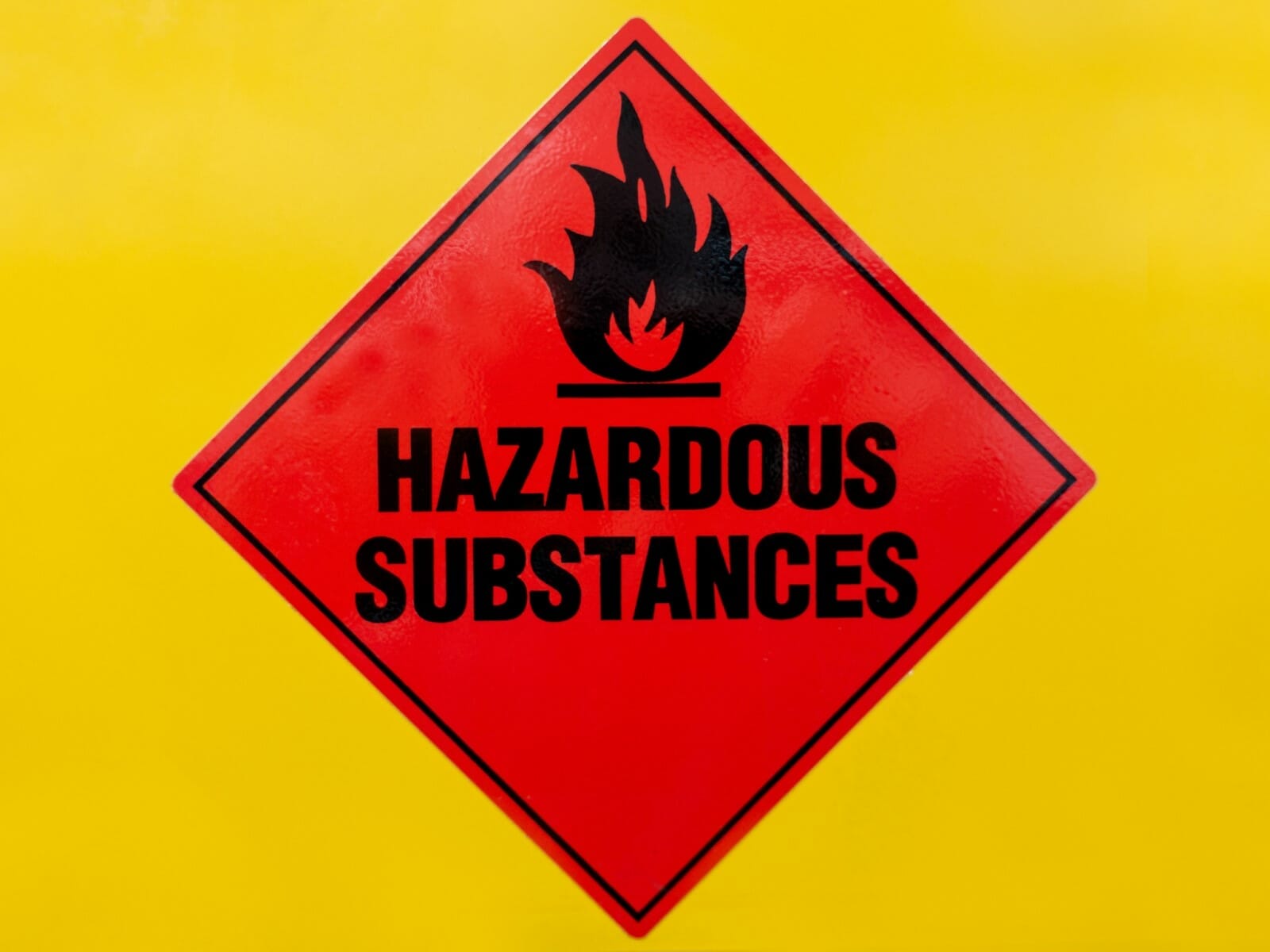
It’s important to keep anything that can harm your pets out of reach or locked away.
Chemicals like antifreeze, pesticides, fertilizers, paints, and even dryer sheets can be hazardous. They may look like food to your pets and should be kept out of reach.
Medications should also be carefully stored away from your pets. If your home is cluttered it can be harder to notice these items are not safely tucked away.
Certain house plants can also be dangerous for pets. Some of the most common plants that should be kept out of reach of cats, dogs, and other animals include:
Certain foods that you enjoy may also be dangerous. Putting food away and cleaning up food waste will help your pets stay healthy. Make sure your dogs, cats, and other animals stay away from:
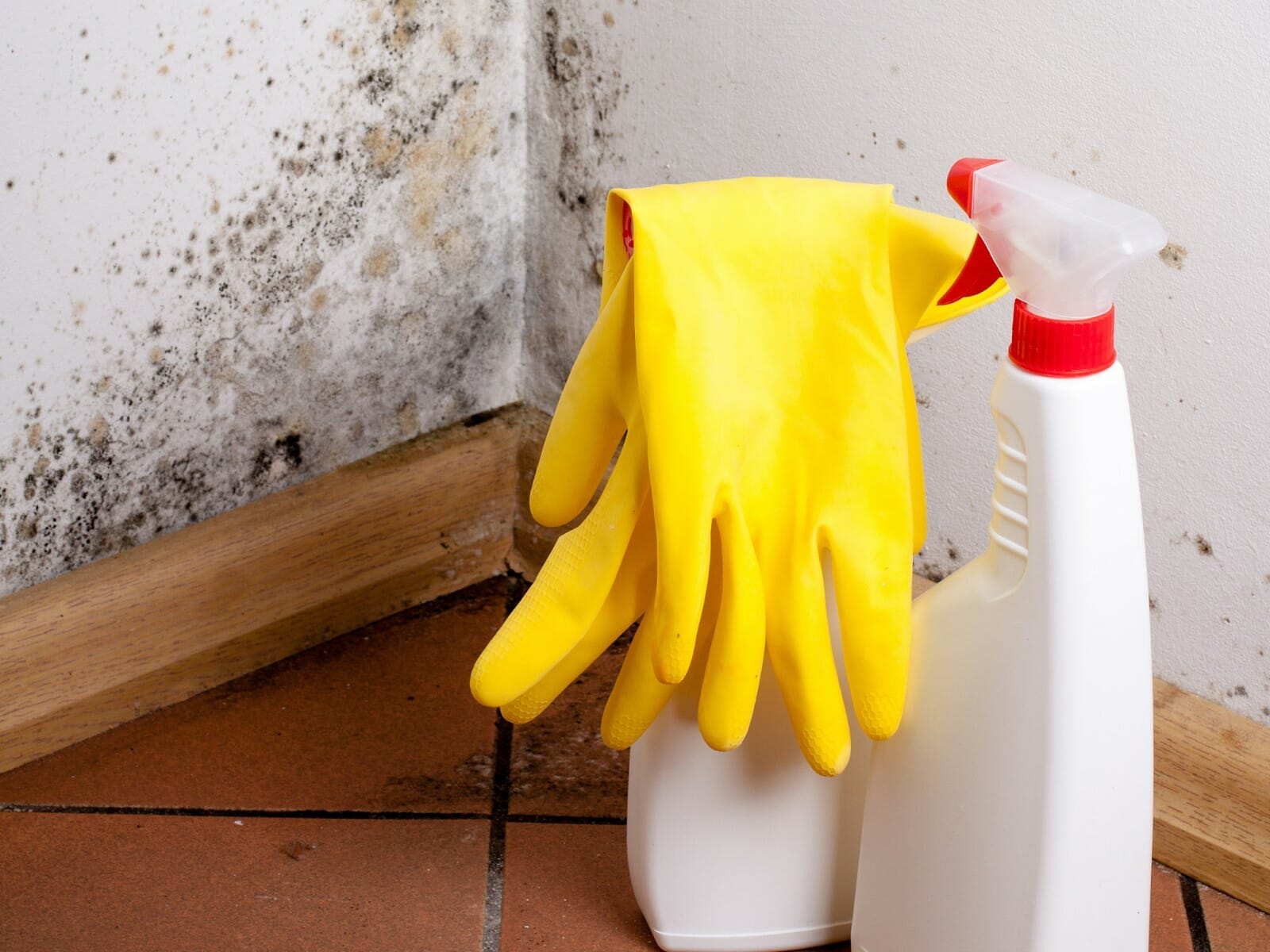
Just like humans, not cleaning up properly can result in the growth of microorganisms that can cause illness and infection in pets.
Mold and mildew growth can cause illness, as can eating food that has been left out for long periods of time. Regularly clean up pet waste and make sure their water is clean. Disinfect your animals’ living spaces as needed.
Make sure that you wash your hands often, both to protect your animals and yourself.
We love our pets, but they can also cause problems for us if they aren’t properly housed and cared for.
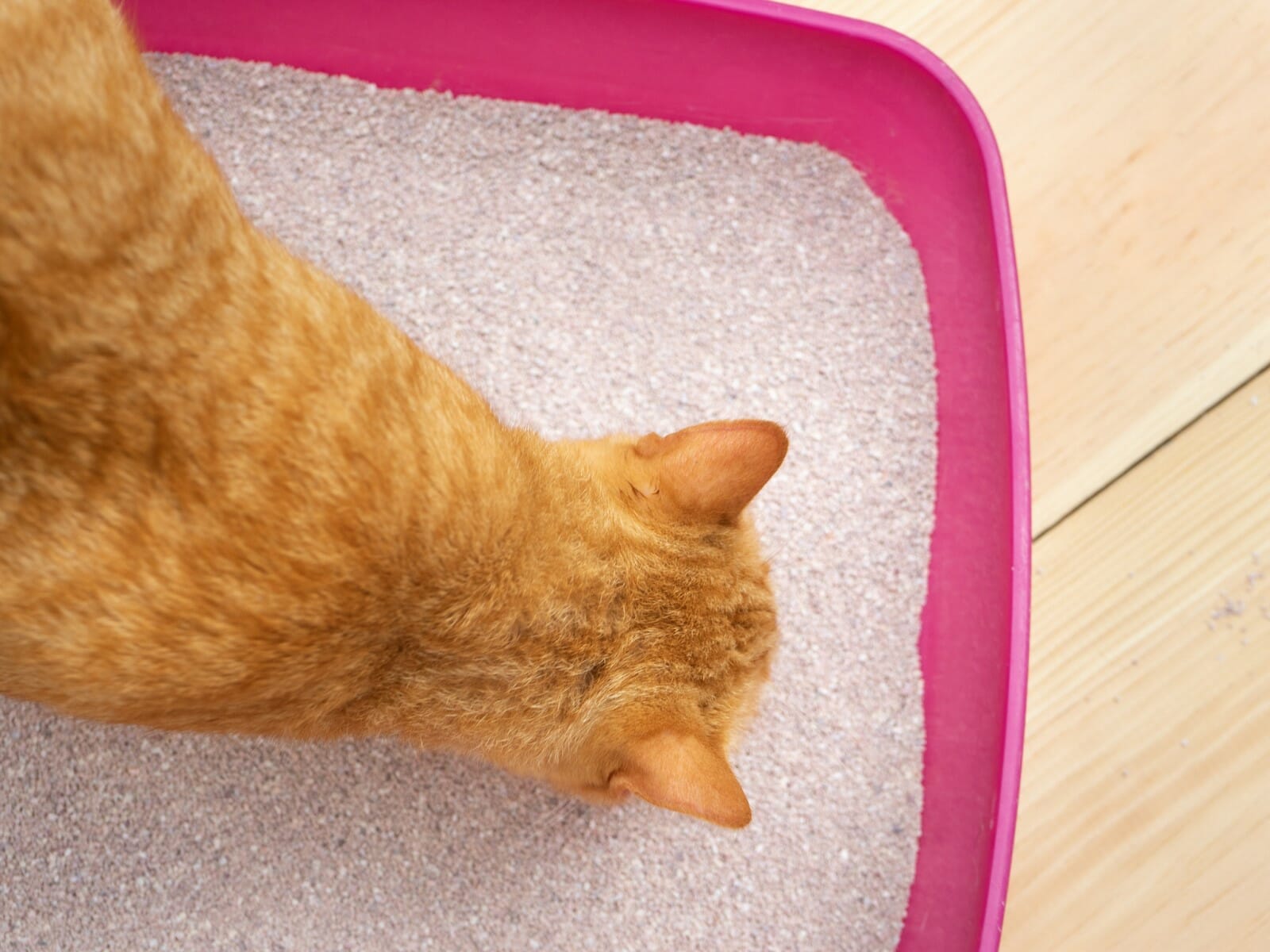
Make sure you clean up feces and change litter boxes or cage linings promptly. Vacuuming and cleaning up animal hair can help with allergies and odors.
All your pets should also have their needed vaccinations so they can remain protected from common diseases and issues that arise in their lives. If you’re not sure if they’re up-to-date, call your veterinarian to check their records and schedule their next booster.
It’s also important to only have as many animals in your home as you can take care of. Pets are lovable and it can be difficult to say no to more when you are passionate about animals. However, be mindful of how much space you have, and know your city’s rules on the number of animals you can legally have in your space.
Don’t bring more animals into your home than you can clean up after or feed. Giving the pets you already have the best quality of life is better than having more pets than you can take care of and risking everyone’s health.

If you’re struggling to get your clutter levels under control or need help cleaning up a big mess, Bio-One is here for you. We’ll help you get your home in good condition for you and your pets. To learn more, give us a call anytime at (702) 704-3724 or fill out a service request on our website.
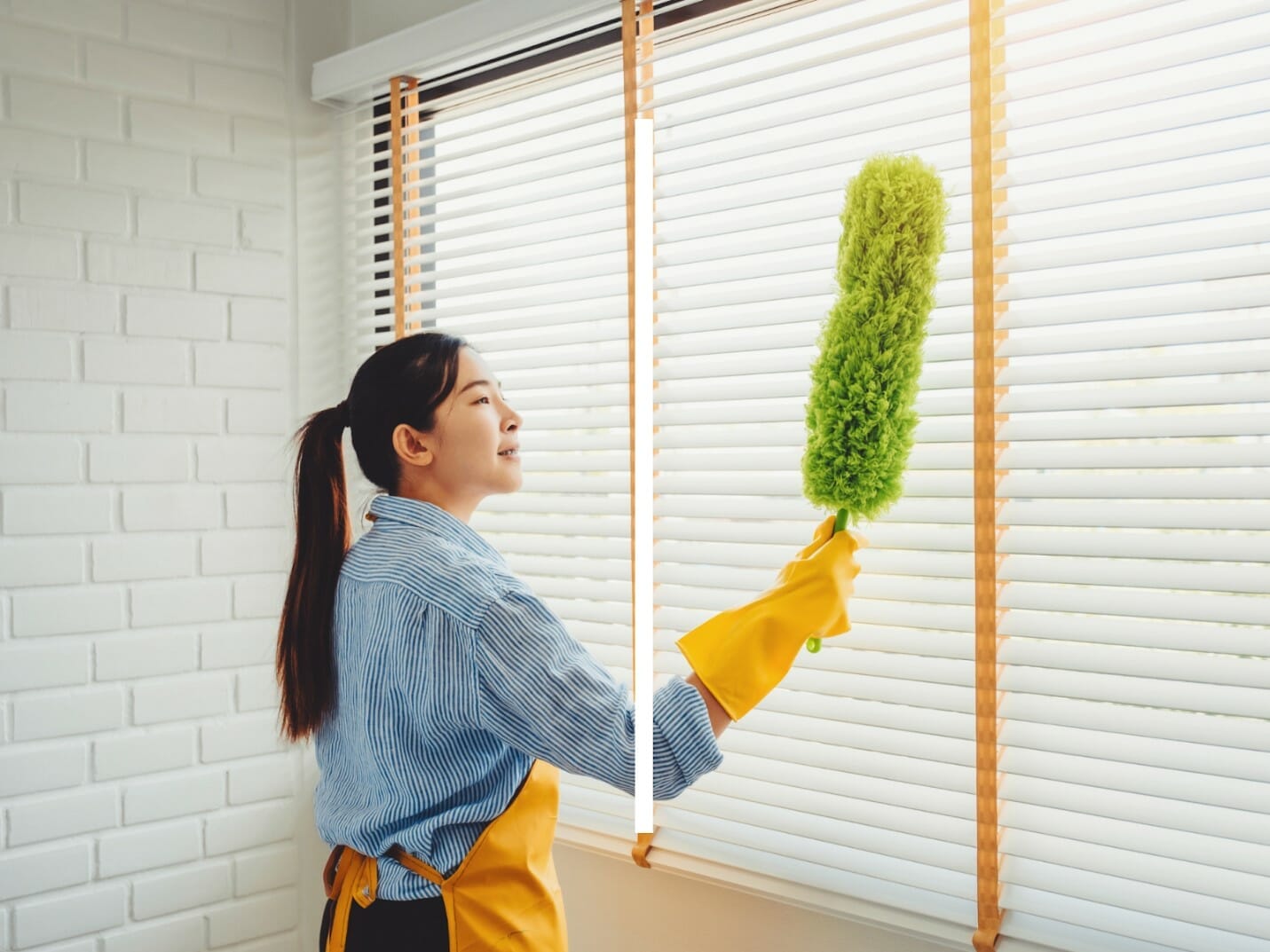
Whether or not you’ve actually done it, spring cleaning is backed up by centuries of tradition. Many cultures bring a spring cleaning period into their yearly rhythms. For all cultures, the kickoff for spring cleaning is marked by longer days and more sun.
As sunlight hours increase, our bodies produce less melatonin, helping us feel more awake after months of cozy winter slowness. We also have more daylight to accomplish tasks we’ve been putting off.
Even if spring cleaning isn’t part of your personal yearly traditions, you can start now.
With so many blogs, books, and shows promoting organization, resources with ideas are everywhere. Keep reading to learn about our favorite spring cleaning strategies.
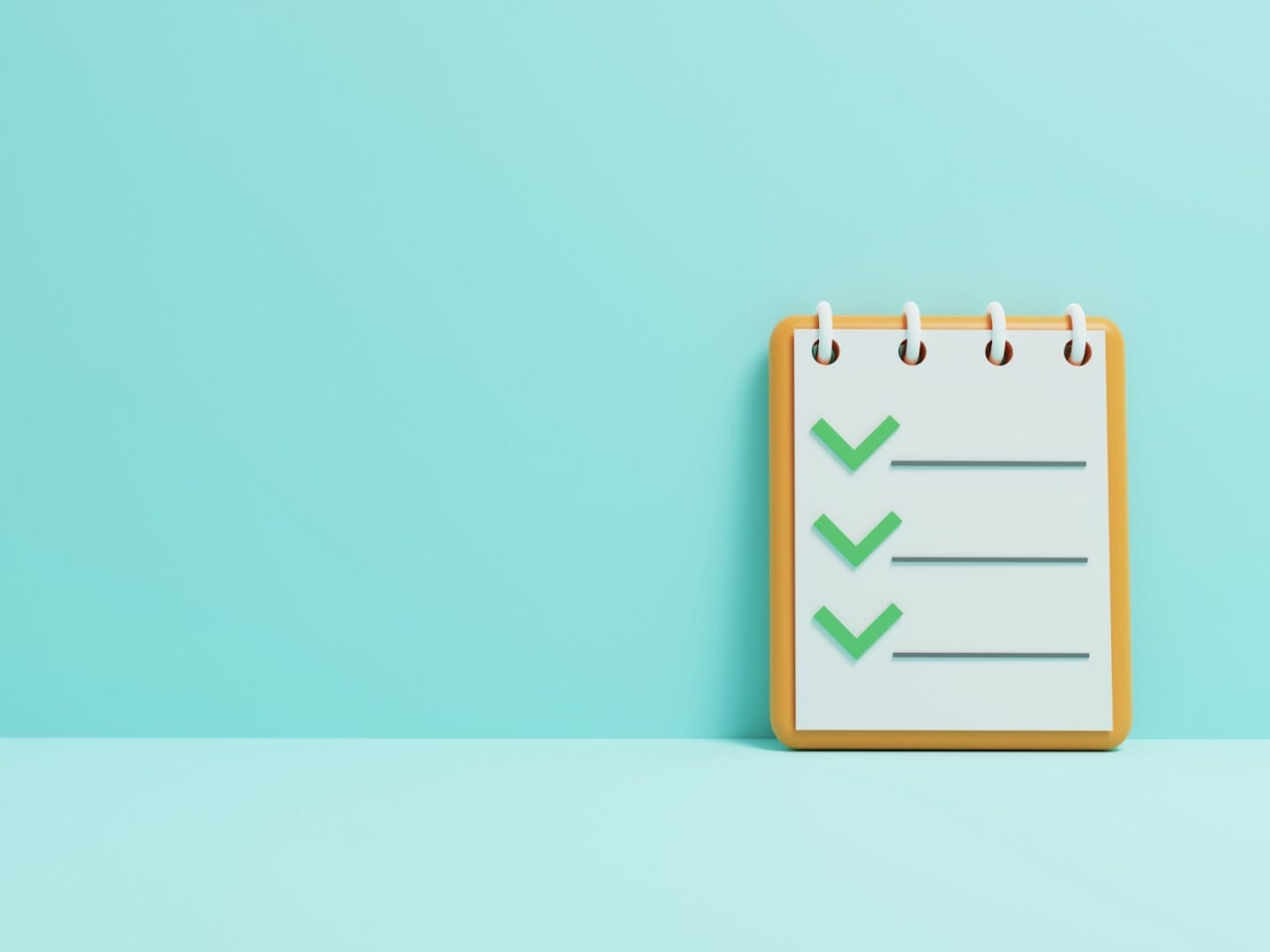
The most important step is knowing where to start. Take a walk around your house and decide what needs attention first.
If you’re a list-maker, you can write down your plan of attack. (Or you can just follow the messy vibes.) Knowing your focus makes it easier to jump in and get the work done.
You can also make a list of which days you want to accomplish certain tasks. Choosing just one room, drawer, or cupboard that you want to clean each day can make the entire process less overwhelming. The important thing is that you are moving forward!
It’s hard to clean when you don’t have what you need.

Make sure any cleaning tools or chemicals you need are in an easy-to-find place. It can be helpful to have a caddy or bucket that you can bring from room to room.
Make sure you have what you need, but don’t go overboard. It’s easy to turn a need for supplies into a shopping trip or a reason to procrastinate.
Don’t fall into that trap!
If you don’t have what you need to deep clean today, you don’t have to wait to get started. You can still put items away or, better yet, find items to get rid of.
Most of us don’t have the time or the desire to go on a cleaning rampage. We have limited time and many responsibilities. (But if you’re a person who works well by focusing and cleaning all day, more power to you!)

For the rest of us, setting a timer can be an effective way to get your spring cleaning done, a little bit at a time. Choose an area to clean and a set amount of time (we suggest starting with just 15-20 minutes). Get your timer going and then work hard until it goes off.
Go back to the same area each day with your same timer strategy until it’s clean. Only then is it time to move on to the next part of your home.
Bit by bit, the mess will disappear.
Having a clean home is its own reward, but building some kind of treat into the process always helps. Here are some ways to treat yourself:

Just be cautious about buying yourself something as a cleaning reward.
Often, having too much stuff is the reason our homes get out of hand in the first place. Try to find some other way to pat yourself on the back.

Scientific research shows that making our dreaded tasks into games can help us be more productive and motivated. There are many apps available that reward users for their accomplishments by letting them progress in a game or giving them a virtual gold star.
You don’t need an app to gamify your spring cleaning, however. There are dozens of analog ways to make cleaning into a fun challenge. Here are a few of our favorites.
Brackets are everywhere in the spring, and you can use them to motivate yourself even after the March Madness finals. Download a bracket and fill it out. There are a number of ways you could apply this to spring cleaning:
The ultimate challenge winner gets to decide where everyone goes out for dinner or a treat.
Sometimes, we have so much stuff it’s hard to know where to put it or keep our spaces clean. With the 4-Box Technique, you’ll take four boxes into a room and label them:
Go through the space and categorize all the items that don’t belong in that space (the ones that do belong can be put away immediately).
The trick here is to make sure you deal with your four boxes right away. Don’t let boxes pile up in your home.
Put the stuff you’re keeping in the right place:
For days when you’re overwhelmed or short on time, the 21-Item Toss is the perfect way to get a little bit of decluttering done in as little as 5 minutes.
Grab a garbage bag—or one of the plastic grocery bags so many of us stow under the sink. Walk through your home and find 21 things to throw away. You can gamify it by timing yourself.
Don’t think too hard—if you don’t use it or need it, out it goes!
If you feel like you can’t deal with your home situation on your own, Bio-One has your back. Our discreet team of compassionate, expert cleaners can help you with your home situation—no mess is too big.
Call us today for a consultation.

Clutter has a habit of creeping into all available spaces, especially in households with children. Clothes, toys, and food messes can pile up quickly, no matter how old your kids are. And you have your own belongings to worry about too!
Thankfully, you’re not alone in the fight to stay organized. Even the most savvy housekeeping masters (looking at you, Marie Kondo) admit to struggling with messiness once they have kids.
Everyone deals with messes and clutter at some point in life. These are normal parts of being human. From time to time, however, it’s a good idea to get the lack of organization under control.
A tidier space is easier to keep clean, and it helps with mental health and productivity (among many other benefits we won’t get into here).
So if you have been feeling overwhelmed with the state of your home lately, we can help! Read on for 5 tips for cleaning and organizing with kids.
Whether we like it or not, kids—no matter their age!—are always watching. Monkey see, monkey do, as the old saying goes.
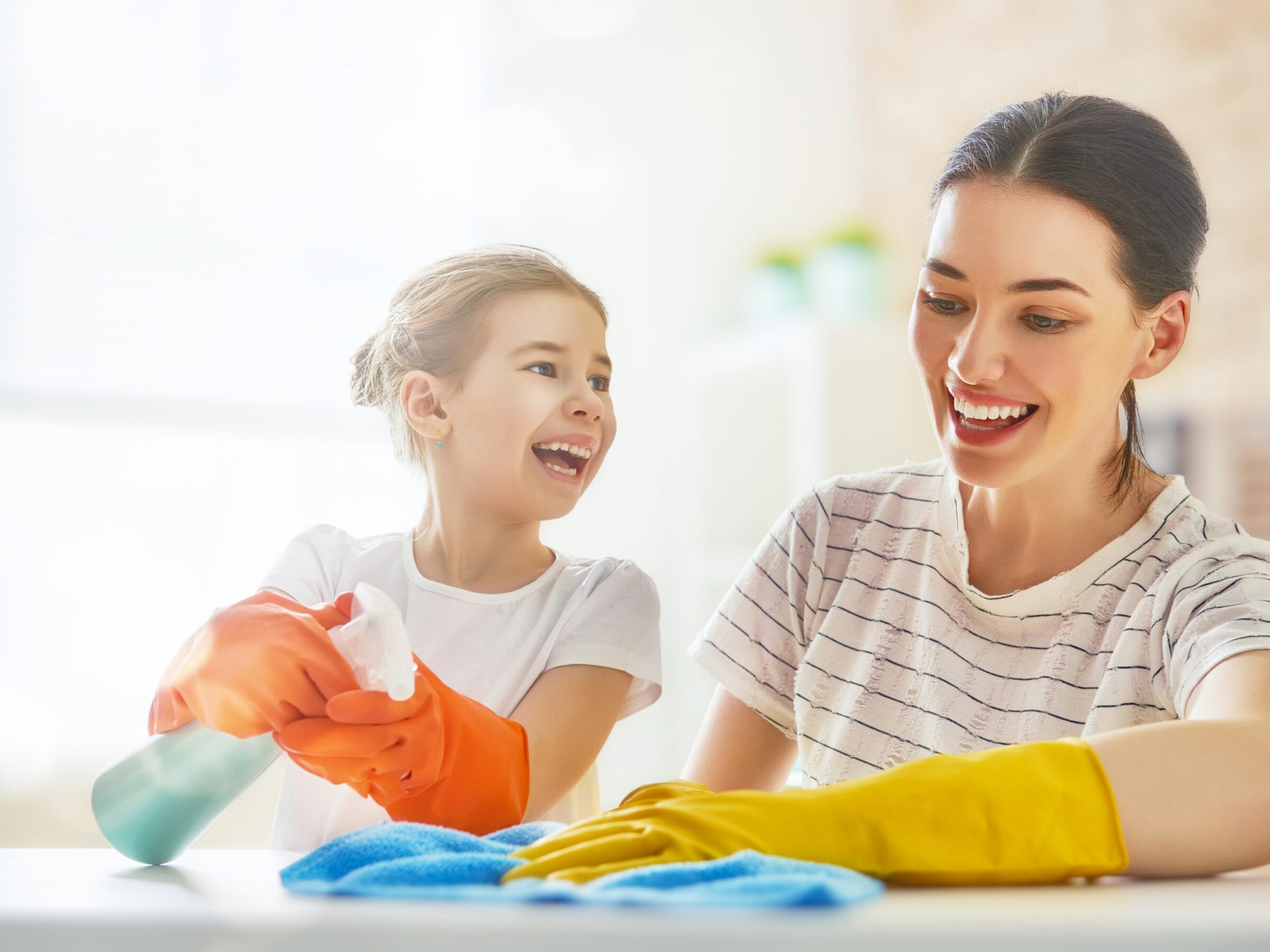
When it comes to clearing clutter, remember that change starts with you. The good news is that being an example of cleanliness does not need to be overwhelming.
Start small by considering only what you own and the spaces you mostly use yourself (yes, we know kids get into just about everything).
Take a look at your bedroom, for example.
If the bedroom looks tidy already, look around the other spaces in the house. What items of yours seem to be out of place? Do any surfaces you have used still need to be cleaned?
Now pick one item or area you want to prioritize. Start making a daily habit of putting the item away or cleaning up the space you’ve chosen. Once you feel you’ve mastered the habit, move on to another task.
When you feel more in control of your own mess, chances are you’ll start to feel more capable of helping your kids tackle theirs—even if it’s just one step at a time!
Checking boxes is incredibly satisfying for most kids and teens alike. If yours are old enough to participate in brainstorming, sit down together to write a list of daily and weekly chores. Then decorate!

Stickers, crayons, sparkly glue, and lots of other craft supplies can turn a boring list into an exciting one. Keep the finished list where everyone can see it every day. Fridges are a great option.
Think of ways to celebrate together once all the spaces in the job chart have been filled, or when some other related goal has been met. Encourage your kids to contribute ideas for goals and rewards.
Here are some ideas of our own to get you started:
Simple and inexpensive rewards can help keep everyone from younger children to teens excited about reaching their housekeeping goals without putting more stress on you as the parent.
Help your kids (and yourself) get through the drudgery of decluttering by turning it into a game. Teach them that every item has a “home” and show each child where it belongs. Everyone knows the cleanup song: 🎶 “Clean up. Clean up. Sing along as you pick up…” 🎶Then make organizing fun!
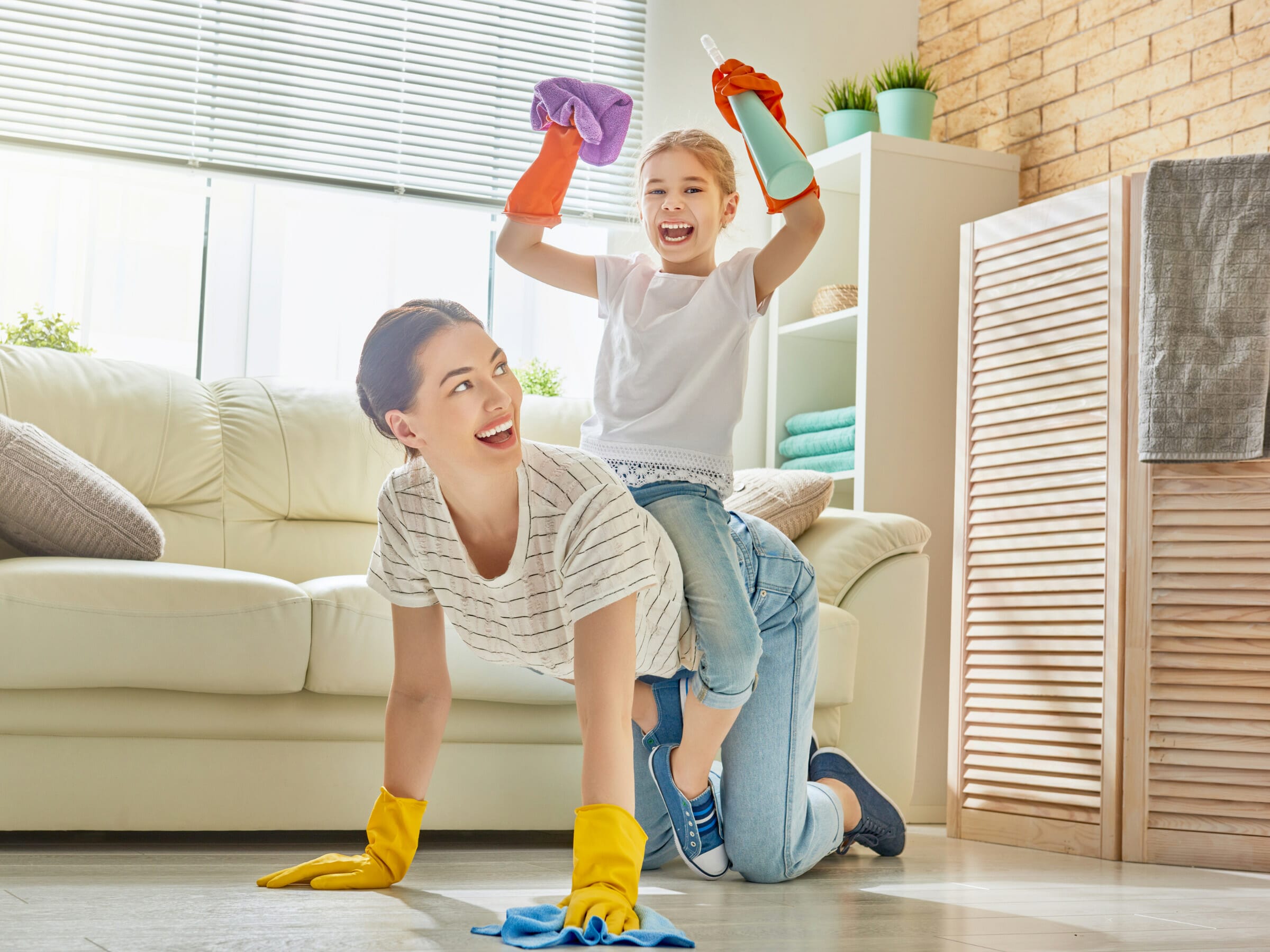
Here are some ideas to help gamify cleaning and organizing:
Some kids love a healthy dose of competition. Races and timed challenges can help the cleaning get done quicker, get everyone’s blood moving, and bring out some good laughs!
For younger children, playing pretend may help decluttering and cleaning seem like less of a chore and more of an adventure. Think about your child’s favorite characters and how you can integrate them into a simple cleaning routine.
Scavenger hunts can be especially fun for clearing clutter. Find items you can hide throughout the house and have the kids look for them as they clean. This can be a particularly good option for older children and teens as it keeps the cleanup task engaging.
The difficulty level can be adjusted depending on age, of course. Consider offering some kind of reward or celebration at the end as an added incentive!
Reality hurts the most when it fails to meet our expectations. So, to avoid unnecessary pain, manage your expectations of your kids and their cleaning abilities!
Prioritize progress over perfection. Appreciate the value of a task getting done at all, even if it seems small.
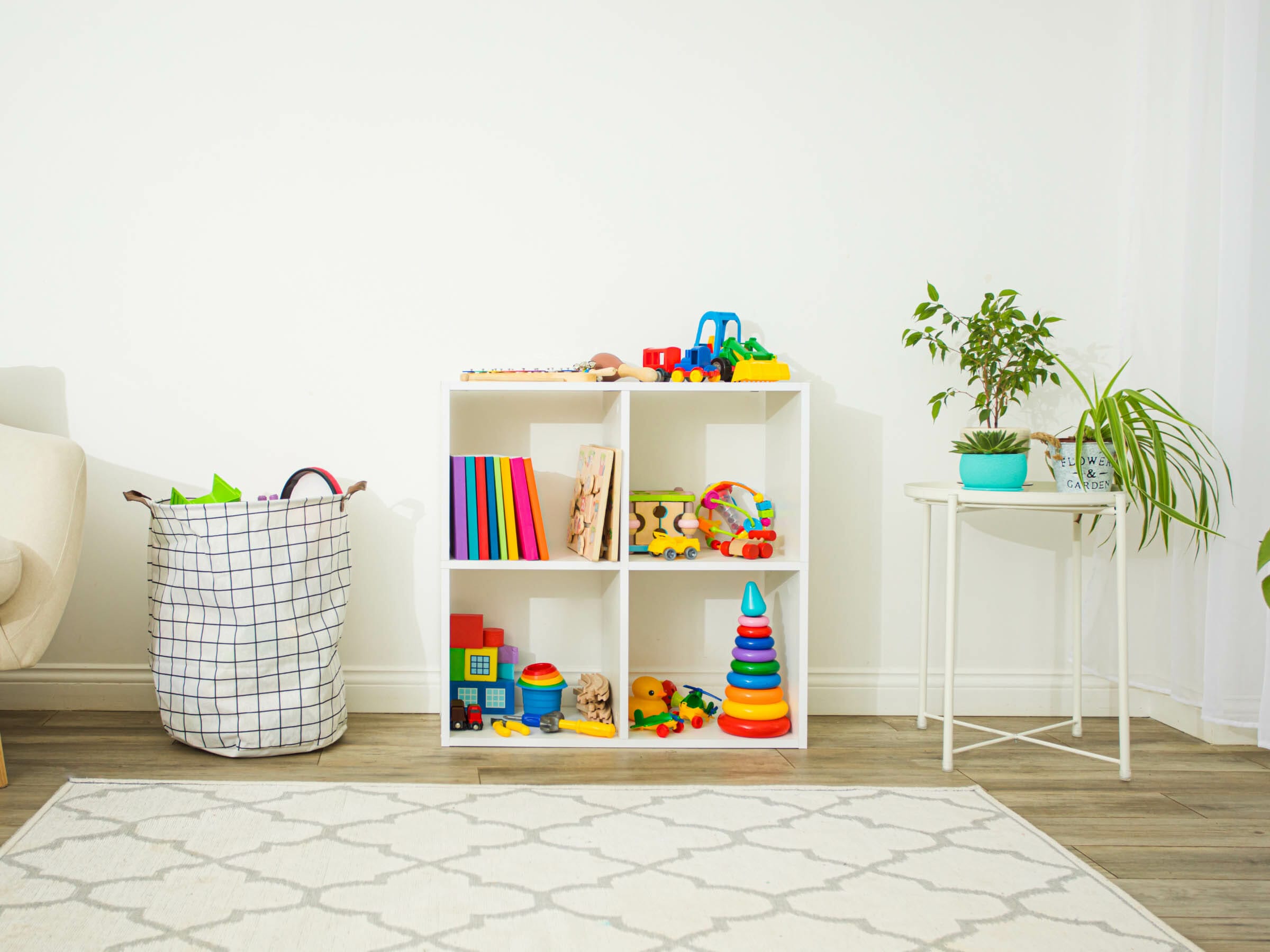
On occasion, kids may break something or use a tool improperly while cleaning. Try to foresee hazards and keep a close watch as your kids help around the house.
Educate your child on how to perform a task or care for an item correctly. If needed, block off access to dangerous cleaning tools your child may try to access when you are not with them.
Caring for kids requires wearing many hats and tackling lots of daily tasks—whether you’re home with them full-time or juggling at-home and work responsibilities. When cleaning feels far too overwhelming, you should ask for help.
Many adults struggle with asking for help, particularly parents. Do your best to put aside feelings of guilt or the fear of inconveniencing someone. Your health comes first! And when you feel better, the rest of your family benefits too.
Consider these resources for extra help:

Whether you pay someone or get help for free, finding people to support you goes a long way.
Sometimes decluttering and cleaning require help from professionals. At Bio-One, we’re a close-knit crew devoted to cleaning up what others won’t or can’t.
We are fully trained, licensed, and insured to take care of any mess you can think of. From animal hoarding to active crime scenes, we’ve sanitized, removed, and disposed of it all. In our 20+ years of experience, we’ve definitely had our work cut out for us.
Our mission is simple: help first, business second. Call us at (702) 704-3724 anytime, day or night. We’ll answer!
If you prefer written communication, you can fill out a service request on our website.
We look forward to meeting you!
Clutter is an everyday occurrence and there comes a point when we all need to clean up our messes. Leave things long enough, and we all start to fall into one of the 5 levels of hoarding.

But what are the 5 levels of hoarding?
What moves a messy room from Level 2 to Level 3?
Understanding the hoarding level of your space can help you prioritize which messes are one-person tasks and which may need some help from a back-up team.
Let’s walk through each level of the Institute for Challenging Disorganization’s Clutter-Hoarding Scale to better understand just how normal hoarding is.
There’s no doubt that many of us would like our homes to look as pristine as a real estate listing ad. But life’s hectic! With busy work and family schedules, numerous responsibilities and obligations, and competing priorities it’s easy to put off a small mess for later. However those moments of procrastination stack up to put our home at a Level 1.
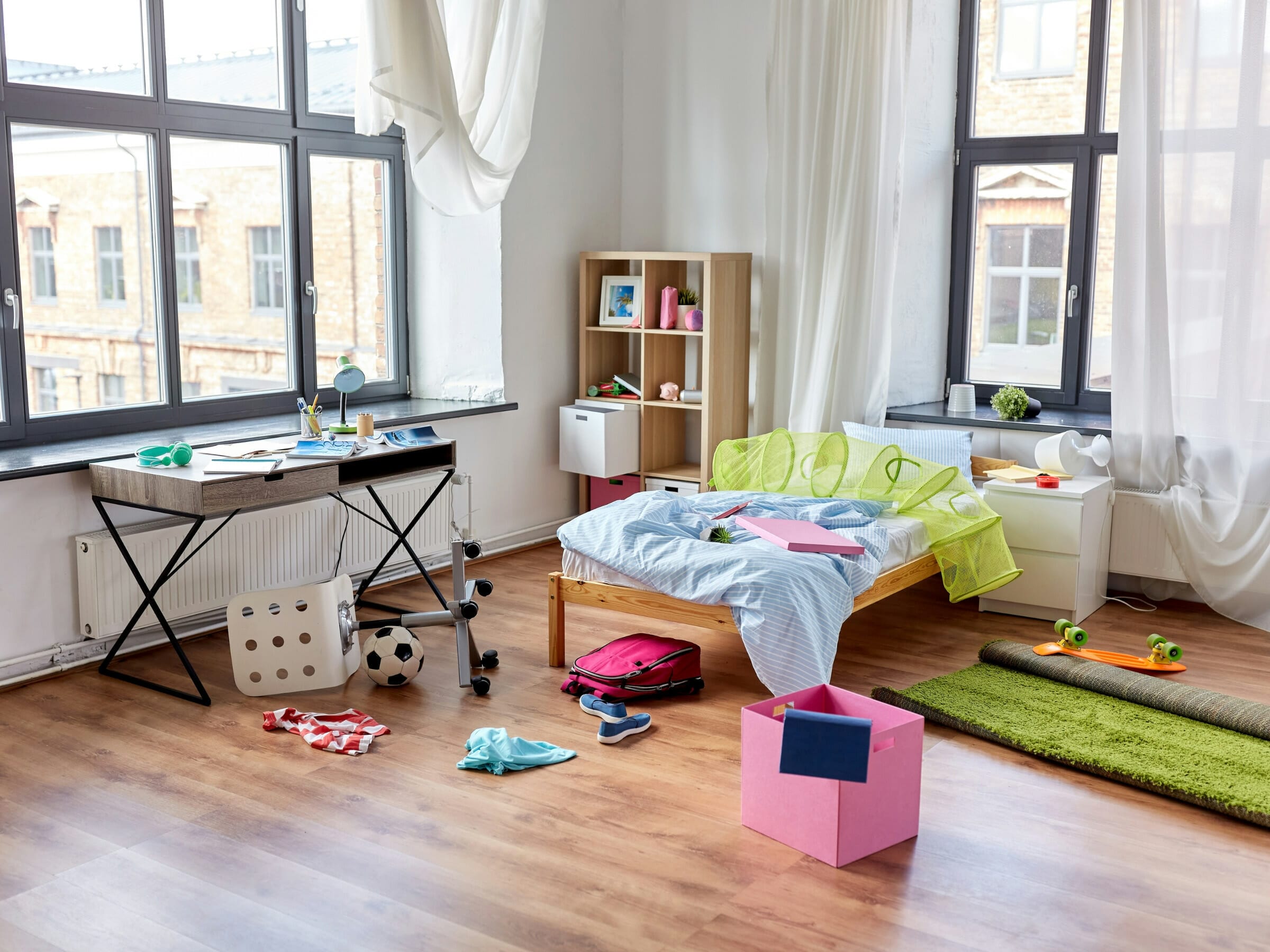
Signs of this level of hoarding include clutter and messes that do not threaten your safety:
Ok, that last one MIGHT be dangerous if you’re barefoot.
None of these messes block exits in your home, and they do not cause an immediate bad odor. If we’re honest, we can admit that all of us—at one point or another—have had our home come in on this level of the hoarding scale.
Leaving your house in this state does not necessarily affect your health.
However, it may exacerbate avoidance habits that lead to snacking and more procrastination—which might lead to more clutter, shifting you up the scale.
This is another common level of hoarding. Most of us frequently bounce between Level 1’s clutter and Level 2’s disarray.
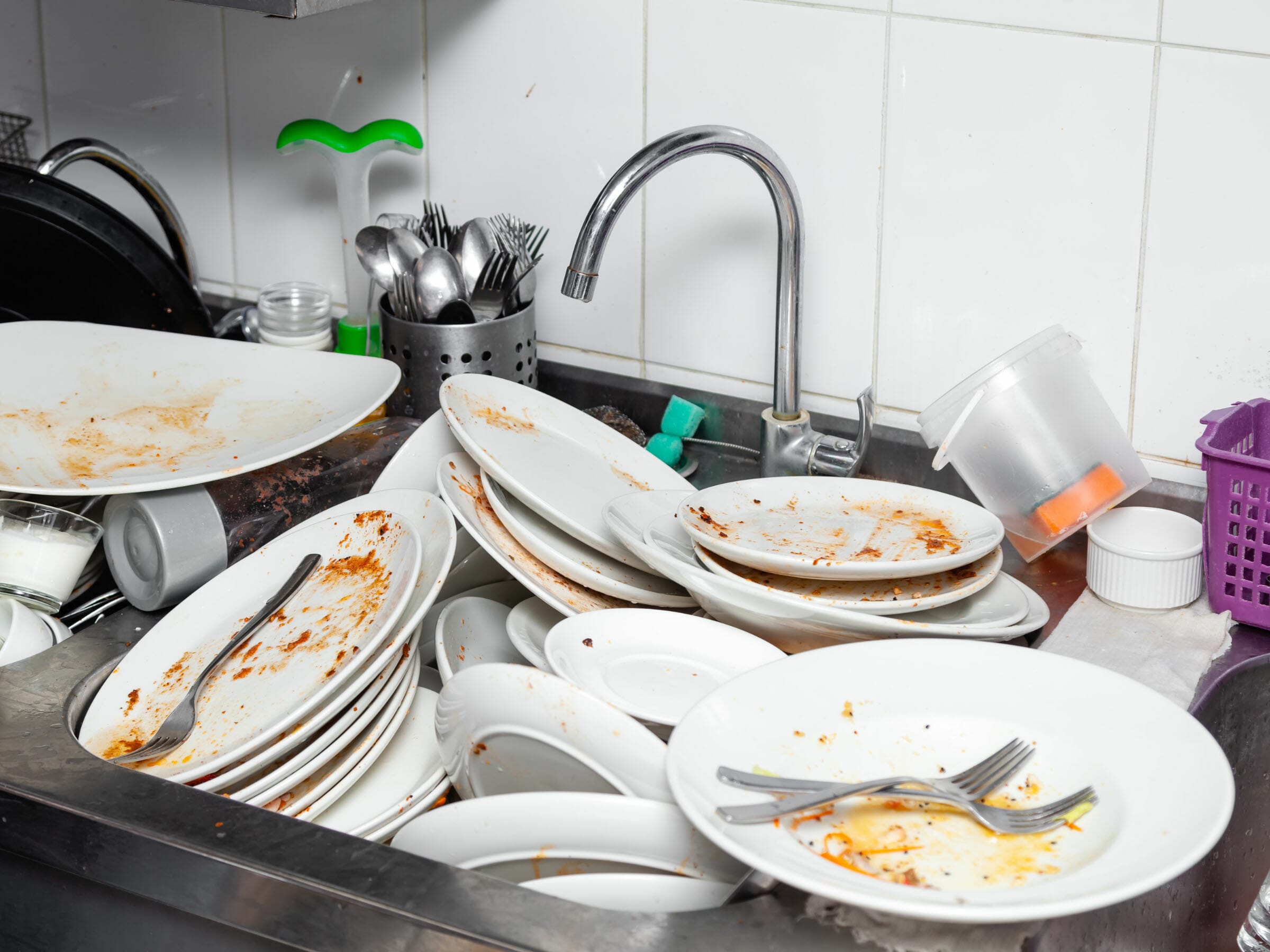
At this level, things literally begin to stack up:
At Level 2, the clutter can begin to impact a variety of areas of our lives. Some studies claim intense clutter increases our stress, makes allergies worse, and overall causes us to feel less satisfied with life.
These negative impacts are sometimes the trigger that leads to the situation getting worse.
Level 3 is where things begin to get concerning.
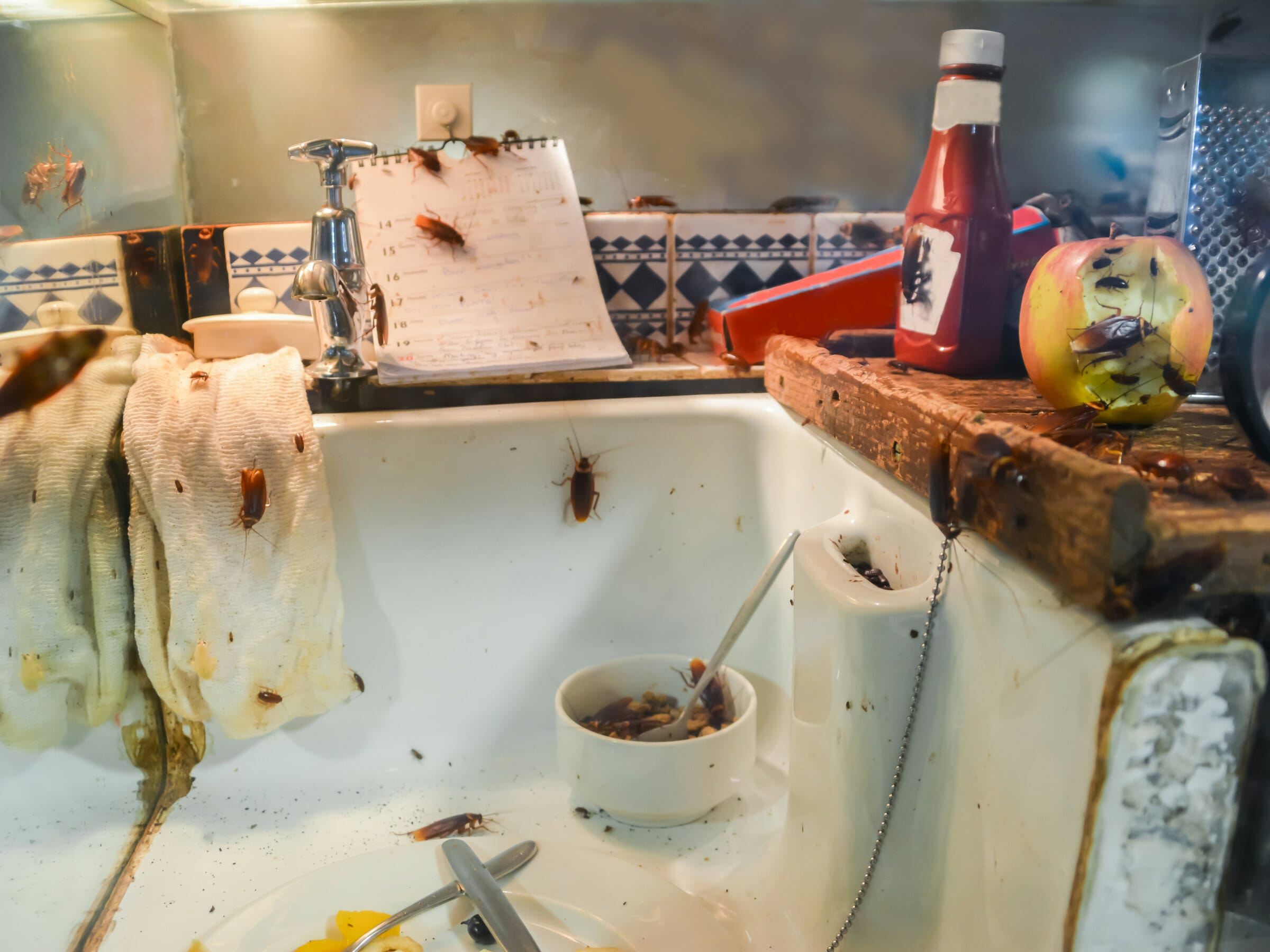
At this point, the mess itself may seem too daunting to tackle, and the increase in clutter results in a decline of cleanliness. There may be piles of objects obstructing multiple exits—or even a whole room used for storage instead of living.
It’s at this stage that pest infestations may become an issue. With the clutter, there are lots of places for unwelcome pests to hide and find food, and infestations of ants, lice, and cockroaches may warrant an exterminator. However, all that clutter makes it difficult for the exterminator to do a good job. Unfortunately, failing to clean up the source may set the stage for another infestation within a few weeks.
Another area of concern may be repairs needed around the home. Work may need to be done, but technicians or repair personnel may not be able to physically get to whatever needs to be fixed. This means small problems may become large ones as minor repairs are left to turn into bigger problems.
This state of things deeply impacts your ability to socialize. Messy and infested living spaces make it difficult to relax with your partner or family. Friends may prefer to outright avoid hangouts at your home. Your loved ones may be concerned about your living situation at this point.
The longer your home sits at Level 3, the higher the chance that leftover messes become long-term damage.
Hygiene and safety take a backseat in a house at Level 4. Long-term spills and messes create bad smells, and much of the house cannot be adequately used for each room’s purpose.

Those whose homes fit this category face daily irritation and inconvenience, all of it eventually leading to high repair bills, tripping hazards, and health hazards.
You may not think tripping hazards are a big deal, but falling over them certainly can be. Depending on how high the stacks are, they could even fall on you and do some damage that way.
There have been well documented cases where people have become trapped in their own home due to tripping hazards. Don’t let that be you!
Health hazards stack up in level 4 almost as quick as the clutter does. Issues like water damage that can no longer be reached lead to structural decay. Larger pests like bats or rodents may make their nests in the attic or basement and contribute to higher possibilities of disease.
A person or family living in this state may find it difficult to be comfortable doing anything.
Tackling the job to get the home back to a healthy and safe state may seem impossible on their own.
This is often what people think of when discussing hoarding behaviors. The situation may be the result of a psychological hoarding disorder or difficulty due to disability. It may have been compounded by depression or generational trauma or habits. The contributing factors are nuanced, varied, and often highly personal.

But whatever the reason, a Level 5 household is in need of serious, professional help.
Those in a Level 5 house live in outright unsafe conditions. On the daily they are coming in contact with:
Not only is it difficult to socialize with others in your home, you may find it difficult to even leave because of the sheer volume of things in the home and the blocked entryways.
Many who are at this stage find themselves disconnected from reality in a number of ways:
At this stage, the structural damage to the home is often irreparable and fire hazards begin to enter the picture.
Houses at level 5 are prone to fires because of the flammable piles of clutter. If a flame were to spark anywhere, it could easily catch something and spread from there.
Not only that, but it’s very difficult for firefighters to enter. If a fire were to start there’d be little to no way of stopping it. With so many flammable objects and no way to enter the home, all it can do is burn.
So how did your home do? Do you have an idea of where your home fits on the hoarding scale? The vast majority of us are on there somewhere, and the good news is that no matter the level your home scores, there is always help available.

After walking through all 5 levels of hoarding, it’s clear we all struggle with cleaning up the house sometimes. There’s nothing wrong with a messy house. It’s a part of normal, everyday life.
However, your health and safety are important, particularly when things advance to those higher levels. When facing a daunting clean-up, here’s quick tip for each level of hoarding:
Your home falls into one of these levels—just like everyone else’s! The next step is determining what you need to get back to a manageable Level 1.
Our team at Bio-One understands messy homes, and we’re here to offer discreet, compassionate help when you or a loved one is trying to dig out from a higher level mess. We offer affordable, professional services that include cleanup, disinfection, and decontamination.
Every job has a unique remediation plan tailored to the specific needs and goals of the client. Rest assured, wherever you may fall on the levels of hoarding, we have the experience and equipment necessary to help you.
Consult with our team today to discuss your situation and determine how much time you can save with professional help.
Denver, CO – Bio-One Inc. ranked #381 in Entrepreneur magazine’s 43rd annual Franchise 500®. This is the sixth year in a row that Bio-One has been included in the ranking.
A total of 1,177 companies met the requirements, and each franchise was given a cumulative score based on an analysis of more than 150 data points. The 500 franchises with the highest cumulative scores become the Franchise 500® in ranking order.
“We’re grateful to be recognized by Entrepreneur for the sixth year in a row,” said Brian Brinegar, President of Bio-One Inc. “The ranking is a direct reflection of our growth, strength of our franchisees, and our ability to consistently deliver care and compassion to our clients.”
Succeeding 12 years of franchising, Bio-One has over 115 offices in more than 40 states with services that include crime and trauma scene cleaning, hoarding remediation, odor removal, sewage backups, and more. In 2021, Bio-One also ranked #1 in Entrepreneur’s Best of the Best for Crime-Scene Cleaning.

About Bio-One Inc.
Bio-One provides high quality decontamination and biohazard cleanup services while treating clients with the privacy and compassion that difficult moments demand. Bio-One services include suicide cleanup, homicide cleanup, hoarding remediation, junk removal, deceased animal recovery, feces removal, and more. Bio-One was first created in 2006 and began franchising in 2010. In 2021, Bio-One joined the Five Star Franchising portfolio. Five Star Franchising is a highly innovative conglomerate of franchisor brands with a mission to ensure its brands are top performers in technology, marketing, branding, and people. For more information about Bio-One, visit us at www.bioonehenderson.com.